Methodist Church at Church Point: The Chapel the Point is Named after - Some History
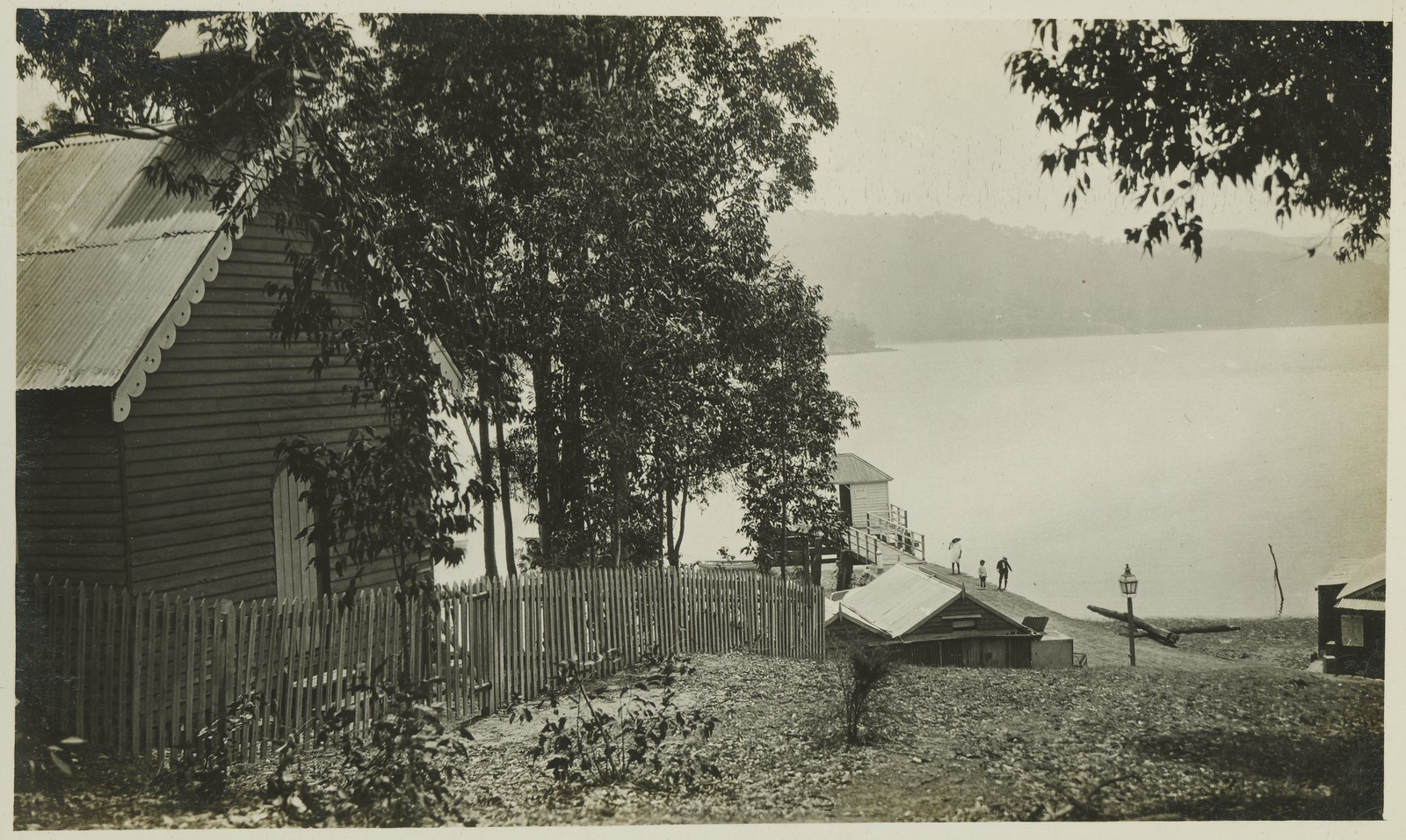 Above: 'Church Point, Pitt Water - 20 minutes from Sydney' by A. J. Vogan (Arthur James), 1859-1948, [circa. 1910 - ca. 1915]. Courtesy State Library of Victoria. Image H82.254/8/29 - showing the chapel; Church point was named for.
Above: 'Church Point, Pitt Water - 20 minutes from Sydney' by A. J. Vogan (Arthur James), 1859-1948, [circa. 1910 - ca. 1915]. Courtesy State Library of Victoria. Image H82.254/8/29 - showing the chapel; Church point was named for.
Remove not the ancient landmark which thy fathers have set. Proverbs 22:28
Placed where Pittwater road merges with Mc Carr’s Creek road at 1 McCarrs Creek Road, on the high side, and overlooking Pittwater, was one of our earliest landmarks was a wooden chapel constructed to serve the people of Bayview and Church Point. Measuring 25 feet by 18 feet and built in 1872 a congregation moved from services under loquat trees to hymns within this structure.
The structure is reported to have given its name to the land as ‘Chapel Point’. However, soon the site was known as Church Point. The Aboriginal name is recorded as ‘Whurra Whurra’ although this is listed elsewhere as meaning ‘go away’ and ‘go home’ and may have been misinterpreted.
The land, as 'God's acre' was gifted to the community from a land grant to William Oliver:
William Oliver acreage - Vol Fol 127-210 - God's Acre for Church Point chapel, cemetery and school - note that McCarrs Creek is actually named 'McGaas creek' - also note that the Trustees sold off 38 3/4 perches or 980.0980398 square metres each to Charles Mudie of Church Point, Engineer (Vol/Fol: 5997-38) and Laurence McDonnell of Manly, Medical Practitioner, (Vol/Fol: 5978-84) in 1949, and that McDonnell onsold to the Wright Clareville men.
These two land sales thereby reduced God's Acre by 1960 to 1960.796 square metres. There are 4046.8564224 square meters in 1 acre, so around half of the original land given. The original joint tenants, as per the Certificate of Title, dated November 8, 1871, were George McIntosh, William Oliver, James Jones, Thomas Oliver, John Alderton, William Baker, all following the occupation of farmers, and residing at Pittwater, and William Henry McKeown, of Lane Cove, also a farmer.:
.jpg?timestamp=1694136796654)
.jpg?timestamp=1694136829474)
.jpg?timestamp=1694136864239)
.jpg?timestamp=1694136898880)
.jpg?timestamp=1694136923613)
.jpg?timestamp=1694136959207)
By 1881 the building was utilised as a school for 22 children and was called the Provisional School, changing in name to the Pittwater Public School in 1884.
See: Church Point and Bayview: A Pittwater Public School Set on the Estuary
In August 1880 an article title 'Lane Cove and Pittwater - by Our Travelling Reporter' relates a petition being presented for the establishment of a school at Church Point by one of the gentlemen responsible for establishing a chapel there:
Lane Cove and Pittwater.
(BY OUR TRAVELLING REPORTER.)
....Pushing on from the land of "oranges and lemons," I took the Pittwater road, as I had heard much of the scenery to be found at the latter place, which I found to be not over estimated. My instructions were to keep close to the telegraph poles and I should find myself at length safe at my destination. I do not know whether it was owing to the uncertain character of the road, or rather track, or from the frequency with which the poles took erratic flights into the bush but I found my journey far more difficult than had supposed. The scenery, however, was undeniable. I lunched at the top of a hill, which commanded a magnificent vista of several smaller hills and dales, bounded by the majestic Pacific, which lay in silent beauty, glistening in the sunlight, at some considerable distance. The soil all around seemed only to wait for the hand of man to burst forth into such frightfulness as that I had just left behind me.
About 12 miles on, as well as I could judge, while crossing the ridge of a hill, I was somewhat startled to observe the telegraph wire trailing on the ground, putting my quadruped and myself in imminent danger of an overthrow. Looking around, I counted about half a dozen posts, evidently struck by lightning, presenting a most desolate appearance. That is a matter I must also commend to the notice of the post-office people, and if not remedied I shall not be surprised to hear of communication between Sydney and Barranjoey being suddenly interrupted. After passing another mile, or so, the scrub seemed to grow denser every step, almost obliterating the track. The friendly posts had also disappeared-presumedly owing to another attack of the lightning. However, to make a long story short, I found it necessary to got off and lead my horse, to prevent missing the way altogether, and was excessively and disagreeably surprised, soon after, to find myself in the middle of the scrub, half way down a mountain side, the treacherous track having completely disappeared. However, there was the sea in sight and I knew I should find some one or other on the shore, and I was not disappointed. I soon came across some houses, which I afterwards ascertained to be Pittwater, and found there the ever ready, courteous hospitality that always awaits the belated wayfarer in rural New South Wales.
After partaking of a hearty meal, and satisfying myself that my horse was doing the same, I strolled around to make a sketch or two. And, truly, it was a subject meet for any artist's pundit. There was the lighthouse at the head of Broken Bay just visible in the distance, six miles away, and the incoming Pacific rolled in through a channel half a mile wide at its nearest part to me, watched by hills covered with verdure, and forming at length into a lagoon some three miles or so long, to the right of which I saw the embryo township of Newport, to which place the Kembla took over 400 people last Queen's birthday. Newport is only represented by one house at present, but the site appeared a peculiarly eligible one for a township.' However, I shall speak of it in another place more fully. At the other end of the lagoon is a Wesleyan church, a tiny neat structure, built on a gentle declivity overlooking the water. Just across the water is Scotland Island, of some little like, rising to some considerable height above the water. Only one house, I believe, is there, the lady inhabiting it being termed the Queen of Scotland Island. Just below, in the bay, was a little sailing vessel engaged in the wood traffic between Pittwater and Sydney.; I stayed to make a sketch, and as the shadows of night were falling fast, I betook myself to my quarters.
A petition was being got up there, having for its object the establishment of a public school in that district. Some 20 signatures I saw in the hands of Mr. M'Keown, who will forward the document to Sydney. As the Wesleyan church will answer temporarily for the purpose of a school, I do not imagine the Department of Public Instruction will hesitate to take pity on this out-of- the-way corner of the colony, and send up a, teacher as soon as possible. Early next morning;. I bade farewell to Pittwater, and with the help of a guide found the right track and came back the: way I went, which of course considerably resembled my going. Taking my time returning, I arrived in Sydney a day or two afterwards. … ' " Lane Cove and Pittwater. (1880, August 28).Australian Town and Country Journal (Sydney, NSW : 1870 - 1907), , p. 18. Retrieved from http://nla.gov.au/nla.news-article70947110
In The SCHOOLS at Church Point, Peter Altona and Sue Gould list 10 boys and 12 girls needing a teacher and school from the Wilson, Fahl, Oliver, Johnson, Baker, Turner, Carrall (Cario) and Wilson Snr. families.
The first teacher was a Miss Martha Perry, who, having completed her training at Richmond Public School and being appointed to the small school at Pittwater by the Department of Instruction, begins at the Pittwater Provisional School in the church premises on 23 March 1881.
The Inspector’s Report upon Miss Martha Perry, Richmond, dated 18 Sept 1880 states: ''20 years, unmarried, ability to Read and Write – Very Fair, Miss Perry gives promise of becoming a very useful Teacher of a Small School''. (NSW State Records)
The second teacher was Matlda Cannnan, born 1862 in Newtown, a young lady who was teaching at Concord Provisional school in 1880, where her family resided. The eldest daughter of Henry Dexter Cannan, a Clerk at what was then called the 'Lunacy Department', had a one year tenure, before returning to more 'urban' places - marrying a few years later and having children of her own:
PUBLIC SCHOOL TEACHERS The undermentioned teachers have been appointed to the Public and Provisional schools specified in connection with their respective names- Provisional Schools – Matilda Cannan, Pittwater PUBLIC SCHOOL TEACHERS. (1883, May 26). Freeman's Journal (Sydney, NSW : 1850 - 1932), , p. 9. Retrieved from http://nla.gov.au/nla.news-article110557837
Matilda resigns on March 31st, 1884. A day later, April 1st 1884, the school is declared a Public one.
Samuel Morrison began teaching in the little church on May 1st, 1884, describing his arrival in "Early Pittwater Reminiscences" Manly, Warringah & Pittwater Historical Society, 16th May 1929, as:
"I was appointed teacher at Pittwater Public School on 1st May, 1884. The coach which was run by W. Boulton, Newport, was timed to leave Bagnall’s Hotel, The Corso, Manly at 4 pm on Sunday for Newport. The men employed at Von Beren’s Powder Works were returning by that coach which collected passengers at the livery stable behind the Steyne Hotel and although the driver had promised to pick me up, he went off as soon as the coach was crowded, thus leaving me no alternative but to walk to Pittwater – a distance of thirteen miles.
After passing the Manly Lagoon, I met no one, and passed only two houses that were occupied – Mrs Malcolm’s at Brookvale and Miss Jenkins at Collaroy. On nearing Narrabeen Lagoon I was overtaken by a man in a spring cart, whom I stopped to make inquiries as to the whereabouts of Pittwater. He told me that he was going that way and would give me a lift. This man was Johnny Collins, an old identity of the district, who kept a boarding house at Newport where Miss Scott now caters for the public.
Next morning Mr Collins rowed me over the Bay, and landed me where Bayview Wharf now stands. I had a walk of one and a half miles to Church Point, where the school was held in the little wooden church."
Mr. Samuel Morrison, Teacher, Provisional School, Pittwater. Government Gazette Appointments and Employment (1884, May 27). New South Wales Government Gazette (Sydney, NSW : 1832 - 1900), , p. 3425. Retrieved from http://nla.gov.au/nla.news-article221672305
Church Point at this time was becoming busier - the Prospector powder hulk was soon to be moved to a place just off Woody Point in 1884 and a Post Office had been opened in the Roche store at Bayview in 1882. The safe landing of little people needing to get to school became a priority for the farming families - as a few articles around this time speak of drownings where boats have been capsized or the need to rescue those who have mishaps on the estuary:
The names of the persons who were in the boat which was capsized in Broken Bay on the evening of Monday, 11th instant, were as follow-.-Joseph Medina, George Cobb, John H. Phillips, and Mary Ann Phillips. Both Cobb and the woman Phillips were drowned. The body of the latter was recovered, and a magisterial inquiry held, when a verdict was returned to the effect that Mary Ann Phillips was accidentally drowned through the upsetting of a boat in Pittwater. NEWS OF THE DAY. (1881, April 20). The Sydney Morning Herald (NSW : 1842 - 1954), , p. 5. Retrieved from http://nla.gov.au/nla.news-article13476545
Another deputation puts forward what is needed and why:
DEPUTATIONS. THE NARRABEEN-ROAD.
A deputation, consisting of the Mayor of St Leonards, Dr Tibbit's, and several other gentlemen, waited upon the Hon. Alexander Stuart, Colonial Secretary, yesterday, to request that the Narrabeen-road from Manly to Pittwater be put in a proper state of repair, and that a jetty be constructed on Church Point at Bayview, Newport. The road, it was represented, is now in a very bad condition, and if it were put into proper order it would open up one of the most beautiful districts in the colony. The jetty was required for the benefit of children going to school and persons attending church. The deputation also asked for a bathing place.
Mr. Stuart said he was quite aware that the road had been in a very bad condition, but it was gradually, perhaps rather too slowly being made, and as soon as a bridge was carried across Narrabeen the work on the other side must follow in a matter of course. He would give instructions to have the road examined specially, and reported upon to him during the ensuing week, and he would take an opportunity of visiting the locality and seeing what further could be done in the what further could be done in the way of relief. In regard to the jetty he would give the matter consideration but while the Government might erect a wharf he thought the inhabitants ought to construct a bathing place. The next thing likely to be wanted by the residents would be that the Government should go and wash them. DEPUTATIONS. THE NARRABEEN-ROAD. (1883, June 2). The Sydney Morning Herald (NSW : 1842 - 1954), p. 9. Retrieved from http://nla.gov.au/nla.news-article13536041
The following tenders have been accepted by the Government :-Turner and Collins, contract 31M. M'Gurr's Creek, road Pittwater, Government Gazette. (1884, January 5). Australian Town and Country Journal (Sydney, NSW : 1870 - 1907), , p. 14. Retrieved fromhttp://nla.gov.au/nla.news-article71007271
THE following tenders were opened by the Tender Board at the Public Works Department yesterday: Wharf at Church Point, Pittwater. NEWS OF THE DAY. (1884, December 10). The Sydney Morning Herald (NSW : 1842 - 1954), p. 9. Retrieved fromhttp://nla.gov.au/nla.news-article13581494
Accepted tenders: William Boulton, construction of wharf at Church Point, Pittwater. GOVERNMENT GAZETTE. (1884, December 31).The Sydney Morning Herald (NSW : 1842 - 1954), p. 6. Retrieved from http://nla.gov.au/nla.news-article13578833
The completion of the Government wharf at Church Point, Pittwater, will prove a great benefit to the residents in that district. The wharf is a substantial wooden structure, and boats drawing 11 feet of water will be able to come alongside at high tide. The population in the neighbourhood of Pittwater is rapidly increasing, and it is understood that the Government intend building a Public school to accommodate 50 pupils. Fruit-growing promises to be the leading industry in that locality. A considerable area of land is being planted with fruit trees. NEWS OF THE DAY. (1885, July 4). The Sydney Morning Herald (NSW : 1842 - 1954), p. 11. Retrieved fromhttp://nla.gov.au/nla.news-article13592258
The above reference to the construction of a new premises for the school follows on from another letter, of August 1884 (signatories.H. McCulloch, Frederick Chave, Charles Johnson, J. Bens, Mrs J. Baker, Thomas Wilson, James Shaw, William Baker, Thomas Oliver, Albert Black, Friedrich Fahl, J. Carrio and A. Wood.) and another in June 1886. This 'News of the Day' appears a few months after the time Albert Black, Coastwaiter of the Broken Bay Customs Station at Barrenjoey, who had children, sells one acre of his land for the purpose of having a proper schoolhouse and premises for the schoolteacher - his offer accepted May 7th, 1885.
Before we leave this first little school on our western shores, it seems from the article 'At Church Point', November 1922 (below) that a young John Roche was an early student - a few words from those who also attended, perhaps as part of a writing letters exercise - and worth noting these appear in the Australian Town and Country Journal - plus an end of year 'prize giving':
Pittwater, Broken Bay.-I am a little boy 11 years old. I come to school in a boat. I have plenty of school-mates, and we have fine fun. My amusements in the evening are playing about and boat sailing. I have a nice little schooner, and she sails very well. This is a very nice place down here, and I would not like to leave it. . -ALFRED.
[Your writing is very good.]
Pittwater, Broken Bay.- I am only a child, but I must write you a letter, and I have seen none from Pittwater yet. We have a public school. The school is held in the church. I believe we shall have a new one. I have a young pet opossum; he will climb up your back, over your shoulders, as he is very tame. It is funny to see him hang by his tail. My father has a large orchard, and we have fruit nearly all the year round. GRACE. The Children's Letter Box. (1886, July 3).Australian Town and Country Journal (Sydney, NSW : 1870 - 1907), , p. 30. Retrieved from http://nla.gov.au/nla.news-article71064727
Church Point, Pittwater, was on the 9th instant the scene of unusual festivity, the occasion being the distribution of prizes to the children attending the Public School.
Upwards of 150 of the residents were present, also visitors from Manly and Sydney. Dr. Tibbetts of Manly, undertook the office of distributing the prizes, which were numerous and valuable. After the prizes were distributed, the children indulged in the usual games – cricket, foot-racing, and rounders, which were continued till evening when a most pleasant day was concluded with the usual loyal cheers, three hearty cheers also being given in honour of the family of Mr Chave, of Pittwater, whose efforts mainly contributed to the successful carrying out of the day’s programme.” NEWS OF THE DAY. (1886, November 12). The Sydney Morning Herald (NSW : 1842 - 1954), , p. 7. Retrieved from http://nla.gov.au/nla.news-article13620170
AT CHURCH POINT
On the precipitous slopes of the hillside overlooking the quiet backwater of Pittwater, and shaded by the silver coated gums, stands the little wooden church that gave Church Point its name. It is a quaint little structure in which a service is held occasionally, and I should think that ten people would crowd It. It has a tower bell. It looked up at the church from the road that winds round the waterside, and 'Johnnie' Roche, the man they call the 'Prince of Pittwater’— -who was my companion, asked me If I had seen the church yard. We scrambled up past the church, and then, among the rank grass and ever-spreading scrub, found the stones that mark the dust of the 'Rude forefathers of the hamlet.' Beside one weatherworn stones 'Johnnie' paused, and spoke to himself rather than to me. 'He was a relative of the teacher at the little school we got a holiday, I remember, to attend this funeral.' In this quiet spot rest many that were friends of my companion in his boyhood. The muter gardeners Time and Mature are gradually repairing this small 'God's Acre,' and the few graves are being gradually lost to human ken. Meanwhile the waters of the Bay lap the sand-fringed road, and motor parties Indicate that to-day is the day of the quick. The dead are of the past. Church Point. AT CHURCH POINT. (1922, November 23). Evening News(Sydney, NSW : 1869 - 1931), p. 8. Retrieved from http://nla.gov.au/nla.news-article118825051
In 1888 a school opened a short distance away along the road at Bay View Road and the church ceased to be used as a schoolroom.
On July 20th 1887 Sir Henry Parkes, while having an ‘alfresco luncheon in the bush’ at Pittwater visited this lovely old building, signing the visitors book.
Sir Henry Parkes Lunches in the Bush at Pittwater
NEWS OF THE DAY. Sir HENRY PARKES visited North Shore yesterday for the purpose of inspecting the crossing at Middle Harbour; known as the Spit, where it is proposed to erect a bridge, giving access to Manly by the North Shore-road. The Premier went over to Milson's Point at 8 o’clock in the morning, where Mr. Ives, M.L.A., the Mayor of Manly (Mr. Austin), and Mr. Charles Hayes were waiting in a carriage with four-in-hand.
A start was at once made for the Spit, and the party were joined on the way by several other carriages, including another four-in-hand. The Spit was crossed by the punt, and after a drive round Manly, tho party, to the number of about 20, including the Mayors of St. Leonards and Victoria, breakfasted at the Grand Pier Hotel.
A start was next made for Pittwater, some 15 or 16 miles distant, and after an alfresco luncheon in the bush, at which the toasts of the health of the Premier and of Mr. Ives were heartily drunk, the return journey was commenced. Sir Henry arrived in town about 6 o’clock in the evening. No decision has yet been arrived at regarding the construction of the bridge.
NEWS OF THE DAY. (1887, July 20). The Sydney Morning Herald (NSW : 1842 - 1954), p. 7. Retrieved from http://nla.gov.au/nla.news-article28350268
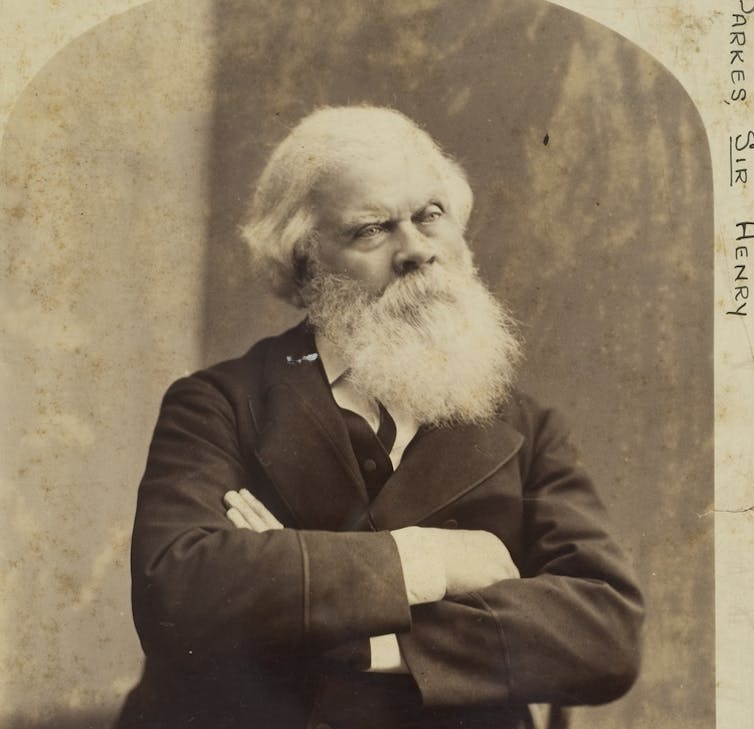
Sir Henry Parkes, who was Premier of NSW when he visited Church Point. Image Courtesy of State Library of NSW, No. a1304033
The church held services every week until around 1908 when a new Methodist church opened at Mona Vale and people no longer travelled to the spot. This made is susceptible to 'visitors':
ROBBERIES.
FEAST IN A PITT WATER CHURCH
Entering the grocer's shop of Mr. Arthur Morris Simpson, Church Point, Pittwater, between Saturday evening and early Sunday morning, thieves made a haul of tobacco, post cards, and a quantity of tinned fish. Access to the shop was gained by forcing a swing window which was insecurely fastened with a string.
After securing their booty — being apparently hungry— they resorted to a church close by, which they also broke into, and, after having feasted, decamped leaving a number of tins as mementoes of their visit. A dinghy and a fishing boat owned by Mr. Simpson were also stolen, in which, no doubt, the thieves made their escape from the neighborhood. The dinghy has since been found washed up on Barranjoey Beach in a much damaged condition. No trace of the fishing boat has yet been found. ROBBERIES. (1912, February 13). The Daily Telegraph (Sydney, NSW : 1883 - 1930), p. 5. Retrieved from http://nla.gov.au/nla.news-article239052580
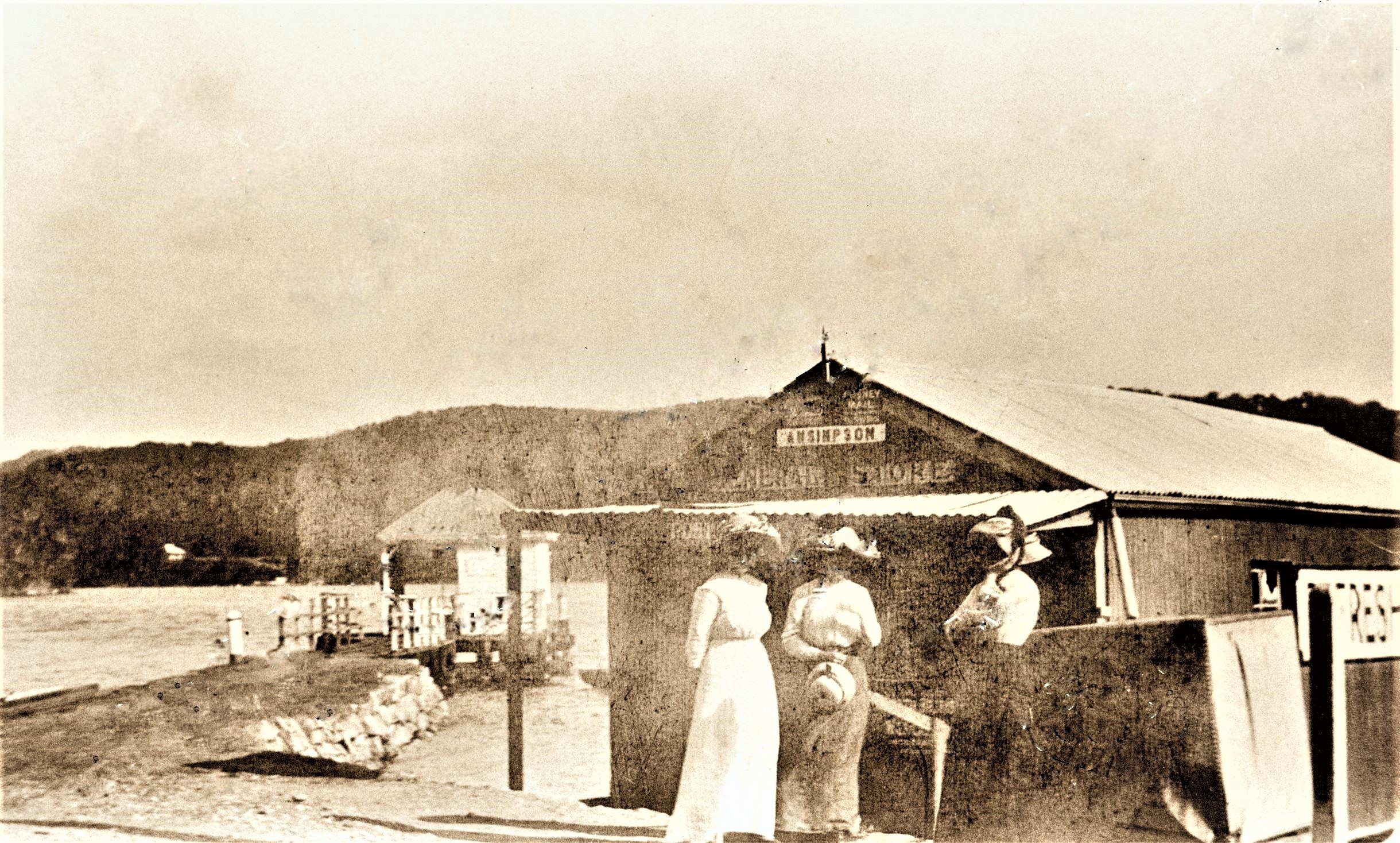
Simpson's Store at Church Point circa 1908-1909
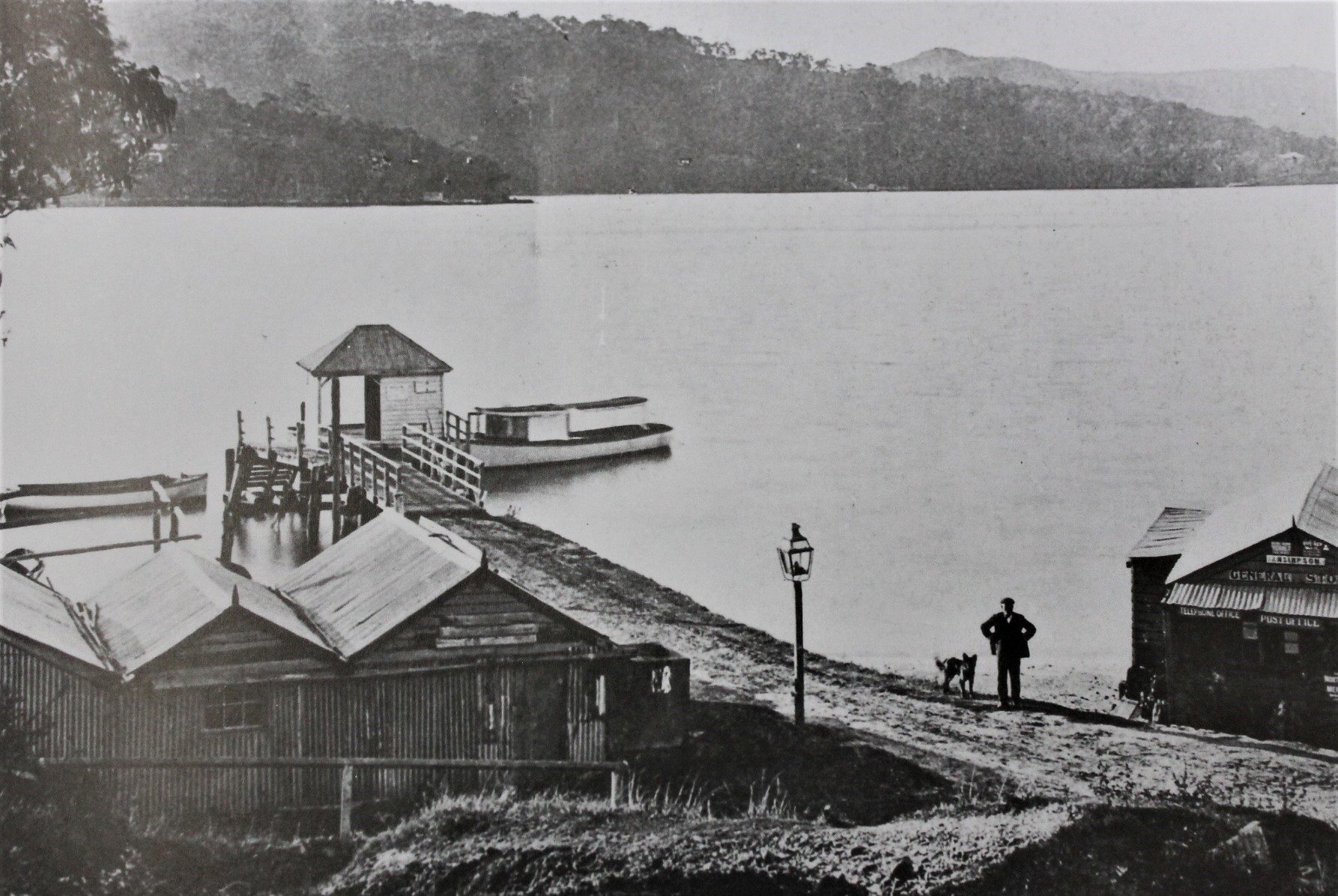
Church Point Wharf and Simpsons Store, circa 1909
GROCERY SHOP LOOTED. THIEVES AT PITTWATER.
The shop of Mr. Arthur Norris Simpson, Church Point, Pittwater, was broken Into some time on Saturday night or Sunday morning, and several pounds worth of tinned fish and other groceries taken. A fishing dingy from the Jetty near by was also appropriated, but this has since been recovered. A curious trace of the fugitives was discovered on Sunday morning when the local church was opened, a few empty herring tins being found in the porch. GROCERY SHOP LOOTED. (1912, February 13). The Sydney Morning Herald (NSW : 1842 - 1954), p. 7. Retrieved from http://nla.gov.au/nla.news-article15309874
Some Services continued although members of the MWPHS visiting in 1926 record that the building and cemetery were in disrepair and letters to Sydney Morning Herald Editor suggested this be rectified if services were to recommence soon.
EARLY PITTWATER. HISTORICAL SOCIETY'S PILGRIMAGE.
Members of the Manly, Warringah, and Pittwater Historical Society on Saturday afternoon made a pilgrimage to historic spots In the Pittwater district.
The party, numbering 34, proceeded to Church Point, and inspected the old Methodist Church and cemetery. Mr. P. W. Gledhill, honorary secretary of the society, delivered n lecture on the early history of Pittwater. He said that the church was opened In 1873, and that the land for the cemetery was given by Mr. William Oliver. Mr. John Wheeler road a paper on Scotland Island and McCarr's Creek.
EARLY PITTWATER. (1926, November 22). The Sydney Morning Herald (NSW : 1842 - 1954), p. 10. Retrieved from http://nla.gov.au/nla.news-article16333867
EARLY PITTWATER. TO THE EDITOR OF THE HERALD.
Sir,-With reference to the account in the "Herald" of last Saturday of the pilgrimage of the Manly, Warringah, and Pittwater Historical Society to historic spots in the Pittwater district, I may state I was a member of the party, and noticed the dilapidated condition of the old church at Church Point The cemetery is badly neglected, and requires fencing and other repairs, while the building itself needs painting. As I understand services are to be resumed shortly, it would appear advisable that the Methodist Church authorities should mike an effort to restore the building and land to Its one time orderly condition so that the old church may again become an attractive place of worship for residents and visitors In the Pittwater district. I am etc.,
Stanmore, Nov. 25. J. S. N. WHEELER
EARLY PITTWATER. (1926, November 26). The Sydney Morning Herald (NSW : 1842 - 1954), p. 12. Retrieved from http://nla.gov.au/nla.news-article16321192
This insight, penned by a lady with lots of local connections, tells us the site is now being neglected:
CHURCH POINT.
(GERTRUDE MACK.)
A Jewel-like spring morning at Church Point. The insistent chant of a butcher bird woke me, calling me out to early service among the trees. I had meant to be very lazy that morning, but once awake, and look-ing out on tho glistening beauty of sea and sky, a bedroom became a dungeon. I quickly dressed, and went out to Join the butcher bird.
The previous night I had driven out from Mona Vale, but the night was dark and the car was closed, and I saw nothing of the beauties of sea and hillsides spreading away on either side of the road, along which we drove.
I had never been in that part of Pitt-water before, and in the crisp light of a brilliant morning the splendid panorama burst with truly dramatic effect.
The sun had Just risen above the Newport hills and brought a reflecting sparkle from rocks and sea, and red-tipped gum leaves.
There was colour everywhere. Once, In childhood I heard an Englishman say there was no blue In Australian waters.
Possibly he had an attack of liver, or per-haps it rained during the one week he was in Sydney, but whatever the cause the remark interested me immensely, and I remember in all innocence asking what colour blue was in other countries? No doubt he thought me a pert little girl, for he did not answer my question, only looked at me with severe dis-approval, and my elders frowned. Since then I have seen for myself the blue of many countries, but nowhere have I seen a greater variety of shading than was around me that August morning.
A-touch of west wind sharpened the colour and made everything vivid and clear cut. The butcher bird chanted again; he was in the garden, high up in the white cedar tree. The garden was lovely, but I wanted to be out and away from houses and fences, and all that meant restrictions. Quietly I took my way down the winding white steps, and gently opened the narrow green gate, with Its guard-ing frog, and so out into the road.
WHENCE THE NAME.
No one was about; I had the world to my-self, and a whole free day before me. A few minutes' walk and I was at the point, and there, some 20ft above the road, and crazily perched on rough stone piles, was the little church, which gave the point its name.
Over 50 years ago two devout members of the Methodist Church felt the need of a house of worship when at their week-end homes in the country-and Pittwater was a very long way from the city in those days-and it was due to their efforts that the tiny weatherboard church was built. From long distances the congregation rode on horseback or drove out in sulkies to the Sunday service. Until the last year or so the church has been used regularly, services being hold by ministers of different denominations each Sunday.
But It became evident that week-enders feel differently towards the Sabbath nowadays, and the church is no longer used, and has been allowed to fall into disrepair.
The graveyard, too, is neglected and over-grown with weeds, though here and there a bunch of lately-faded flowers showed remembrance of long dead friends. But the fences are broken, and old graves bidden beneath a tangle of vines.
Neglected fences are a depressing sight, but I rather liked the wildness and the tangled vines; they added to the sense of peace, and left the sleepers quiet and un-disturbed.
Behind the church a steep, high hill challenged my climbing powers. The air was keen, and encouraged one to physical effort, so I accepted the challenge, for I guessed a picture of uncommon beauty would reward me when the top was reached.
The climb was a stiff one, and became more so as I neared the top, and made me very conscious of the thickness of my woollen jumper. Enormous boulders confronted me, which I clambered, or circled round, with the occasional aid of a strong young sapling. On the very summit of the hill was an immense rock; It seemed to have no connection with the surrounding earth, and stood precariously balanced, as though a strong kick would send it hurtling and crashing down the hillside and into the sea.
No doubt geologists could give a simple explanation of its presence there, but to me it appeared to have been hurled from another planet by the band of some angry Titan. I stood upon the top of the rock, saw before me a picture that would have made a climb of twice the distance well worth while.
KURING-GAI CHASE.
From my high altar I looked across the water to Kuring-gai Chase, extending dark and undulating for many miles. Building is prohibited there now, but some early houses still remain. One of them to the left of the point, was built years ago by an artist who had lived In Italy. He was enchanted by the resemblance to the much-loved land of his youth, and every Friday saw him and his Italian wife, well supplied with olive oil and macaroni, on their way to the Chase.
Week-ending was not then the common-place it has since become. There were no trams out from Manly; motor cars were un-known, and the journey and matter of pro-visions were something of an undertaking. But they always went, and for two whole days memory bridged the distance between Australia and the Italy they know so well.
As I looked at the richly dark hills, and not yet spoilt by progress and land agents, the cobalt blue of the sea, paling into turquoise where it lapped on little crescent beaches, I could see why our Italian friends had been enchanted with the place.
If scenery alone were the lure of travel, there would be no need to go far beyond Australian waters. Fortunately for shipping companies something more is needed. Restlessness is hard to satisfy.
Away to the right a fleet of white yachts looked, in the distance, like a huge cluster of sleeping swans. Beyond them, scattered red roofs added to the effect of a painted scene.
"The whispering waves were half asleep,
The clouds were gone to play,
And on the bosom of the deep
The smile of Heaven lay."
Presently one of the sleeping birds began to stir, to slowly stretch long pointed wings above the shimmering water, then with a big shuddering yawn she was fully awake, and swinging out before the rising breeze And now the rest was disturbed, and one by one wings were stretched, and the blue sea was soon dotted with great white birds.
Something within told me the hour was getting late. My bird congregation had dispersed, the service was over. I heard, too, the tooting of motor horns, and knew I no longer had the world to myself, the Sunday procession of motor cars had commenced.
A downward track led to some charming gardens. Brilliant oranges amid glossy leaves caught the sunshine, smiling wattles, and the soft fresh red of poinsettias glowed above emerald green lawns. And over all was the azure sky. The contrasts delighted the eye, but still more delightful just then, though not to the eye was the odour of frizzling bacon.
The morning skies had not ' knocked on my sullen heart in vain," and better still they had given me a fine appetite for my belated breakfast. CHURCH POINT. (1927, September 10). The Sydney Morning Herald (NSW : 1842 - 1954), p. 8. Retrieved from http://nla.gov.au/nla.news-article16403005
The chapel was by then over 50 years old and worth looking at by those interested in the early history of Pittwater. Percy Walter Gledhill (1890-1962), an early member of the Manly, Warringah and Pittwater Historical Society, who had a passion for Australian church history which resulted in numerous publications and a significant collection of papers, penned the following:
AN HISTORIC CHURCH. Church Point Memories.
(BY P.W.G)
With reference to "J E C's" very interesting letter in a recent issue of the "Herald," I would like to add a little further information, and, at the same time, to correct a small error that has been made to the effect that, "so far as appears, the church was then (1882) the only church building of any denomination on the seafront between Manly and Gosford. " St John's Church of England, Pittwater, on the headland near the 11-mile peg, was the first house of prayer in that district, having been opened on September 21, 1871, and was referred to as follows:
"This small church was situated quite in the wilderness, being the first erected in that part of the colony "
The erection of the little Methodist Church was through the efforts of Mr. George McIntosh and Mr William Henry McKeown, who conducted services at Bayview, under a tree. This prompted Mr. William Oliver, an early settler of this district, to give one acre of land for 10/ to the following gentlemen, as joint tenants, as per the Certificate of Title, dated November 8, 1871: - George McIntosh, William Oliver, James Jones, Thomas Oliver, John Alderton, William Baker, all following the occupation of farmers, and residing at Pittwater, and William Henry McKeown, of Lane Cove, also a farmer.
The little church was erected on this land in the year 1872 for the sum of £ 60, and the point derives its name from this little wooden house of worship (Church Point though in many early records is spoken of as Chapel Point). In the cemetery lie many pioneers who passed away about half a century ago, and such a place enkindles in one's memory the lines of Gray's "Elegy" -
"Each in his narrow cell for ever laid,
The rude forefathers of the hamlet sleep "
The statement of "J EC" that the minister could only visit this church about once a quarter accounts for the burials in this God's Acre being taken by the Rev R S Willis, M.A. Incumbent of St Matthew's Church of England, Manly, up to 1890, and therefore the records of these burials are contained in the Church of England burial register at Manly. This church was used in the week days from May, 1884, until 1888 as a Public school, and known as the Pittwater Public School under the charge of Mr S Morrison, who now resides at Manly. It was on July 19, 1887, that the late Sir Henry Parkes paid a visit to the school in this church building and signed the school's visitors' book. It is to be trusted that the demolition of this church will not be proceeded with, but that it will be restored, and again used for public worship, as the population is growing, and the nearest church is three miles away. This will save this historic place from going into oblivion. I have approached the church authorities with the hope that something may be done at the eleventh hour; even five members of my society (the Manly, Warringah and Pittwater Historical Society) having approached me to the effect that they are willing to spend a few Saturdays, if a conveyance can be provided to help to restore this building. I close with the following appropriate words of Scripture -"Remove not the ancient landmark which thy fathers have set." AN HISTORIC CHURCH. (1930, April 5). The Sydney Morning Herald (NSW : 1842 - 1954), p. 9. Retrieved from http://nla.gov.au/nla.news-article16639396
Plans to demolish the building ensued and the structure was torn down in April 1932 despite efforts to save it for its heritage value. The cemetery, fortunately, remained in place and protected by Warringah Shire Council and then Pittwater Council and residents. (See Church Point Reserve Association Website).

HISTORIC METHODIST CHURCH. (1930, March 19). The Sydney Morning Herald(NSW : 1842 - 1954), p. 16. Retrieved from http://nla.gov.au/nla.news-article16634674
OLD CHURCH DEMOLISHED.
The demolition of the old Methodist Church at Church Point, Pittwater, which was criticised on the score that the building should be preserved on account of its historical associations has been completed during the last few days
The residents of the district were far from being unanimous concerning the wisdom of the decision especially in view of the fact that the nearest church is three miles away and those who opposed it were supported by the Manly Warirngah and Pittwater Historical Society.
For several years the building was used on week days as a public school and In 1887 was visited by Sir Henry Parkes whose signature appears in the old visitors' book.
OLD CHURCH DEMOLISHED. (1932, April 6). The Sydney Morning Herald (NSW : 1842 - 1954), p. 15. Retrieved from http://nla.gov.au/nla.news-article1685364

DEMOLISHED METHODIST CHURCH. Erected in 1872 on Church Point, Pittwater, this old building was recently demolished. DEMOLISHED METHODIST CHURCH. (1932, April 7). The Sydney Morning Herald (NSW : 1842 - 1954), p. 12. Retrieved from http://nla.gov.au/nla.news-article16853823
Church Point.
The same year, a probationer in his third year, the Rev. Edward J. Rodd was beginning his two years' term at St. Leonard. His circuit extended to Pittwater, and that year the Church Point Church was erected at a cost of £60.
The erection of the church was accomplished through the efforts of Messrs. Geo. McIntosh and Wm. Henry McKeown, who conducted services at Bayview under a tree. Mr. William Oliver gave the site. In many early records it is spoken of as Chapel Point Church.
For several years it was used as a public school, and Sir Henry Parkes' signature appears in the old visitor's book. Where is that book now? Diamond Jubilee. (1932, December 17). The Methodist(Sydney, NSW : 1892 - 1954), p. 16. Retrieved from http://nla.gov.au/nla.news-article155292368
Once the little chapel was gone the land was known simply as the Church Point Cemetery.
The burials at Church Point Cemetery took place between 1882 and 1918. There are only 11 confirmed burials and one cenotaph. It is assumed many more were laid to rest here, but no more records could be found and any other headstones are now gone with time.
Those known to be laid to rest here are:
Millie Proctor Austin (1820 – 15 Aug 1896)
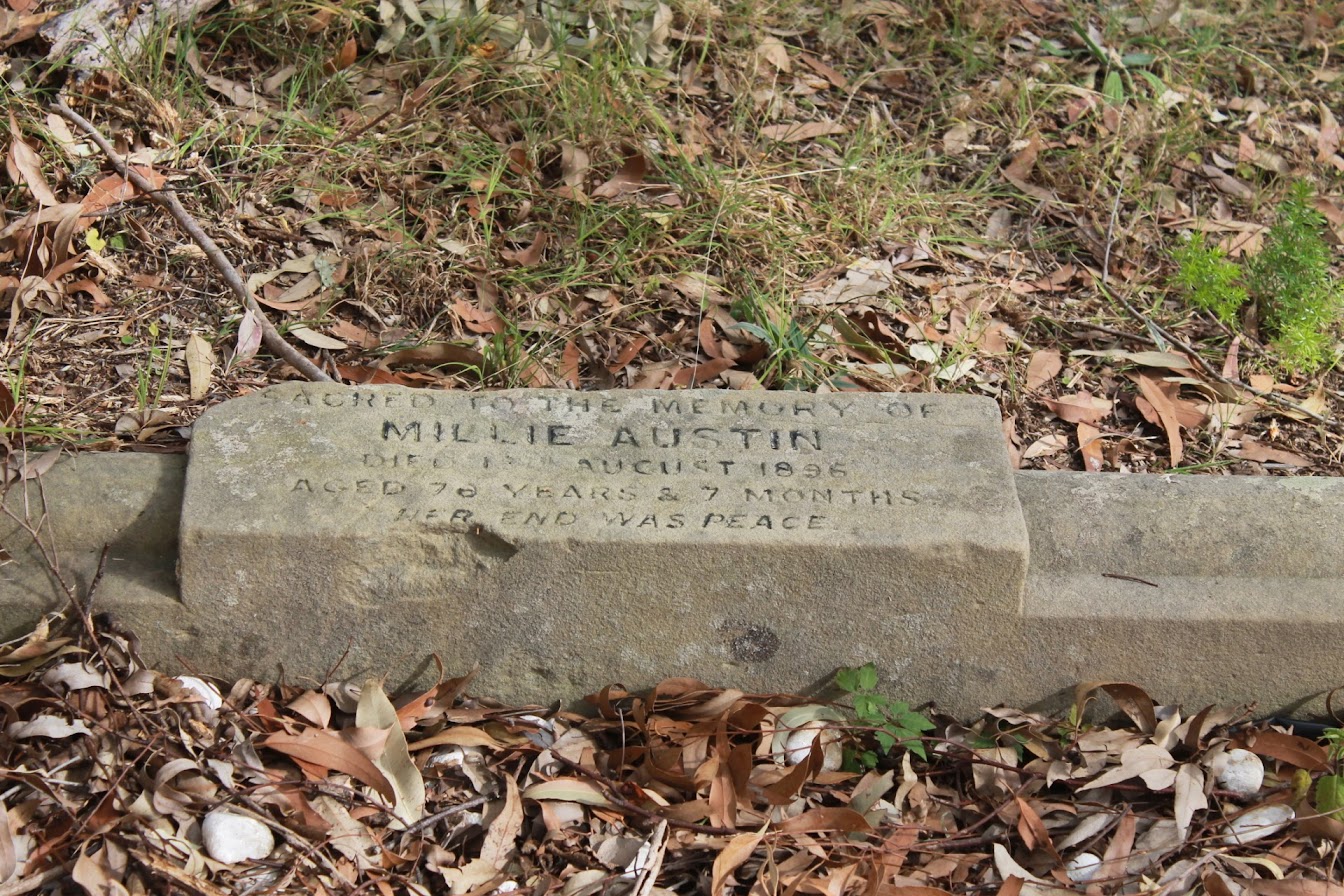
Frederick Chave (1831 – 3 Aug 1898)
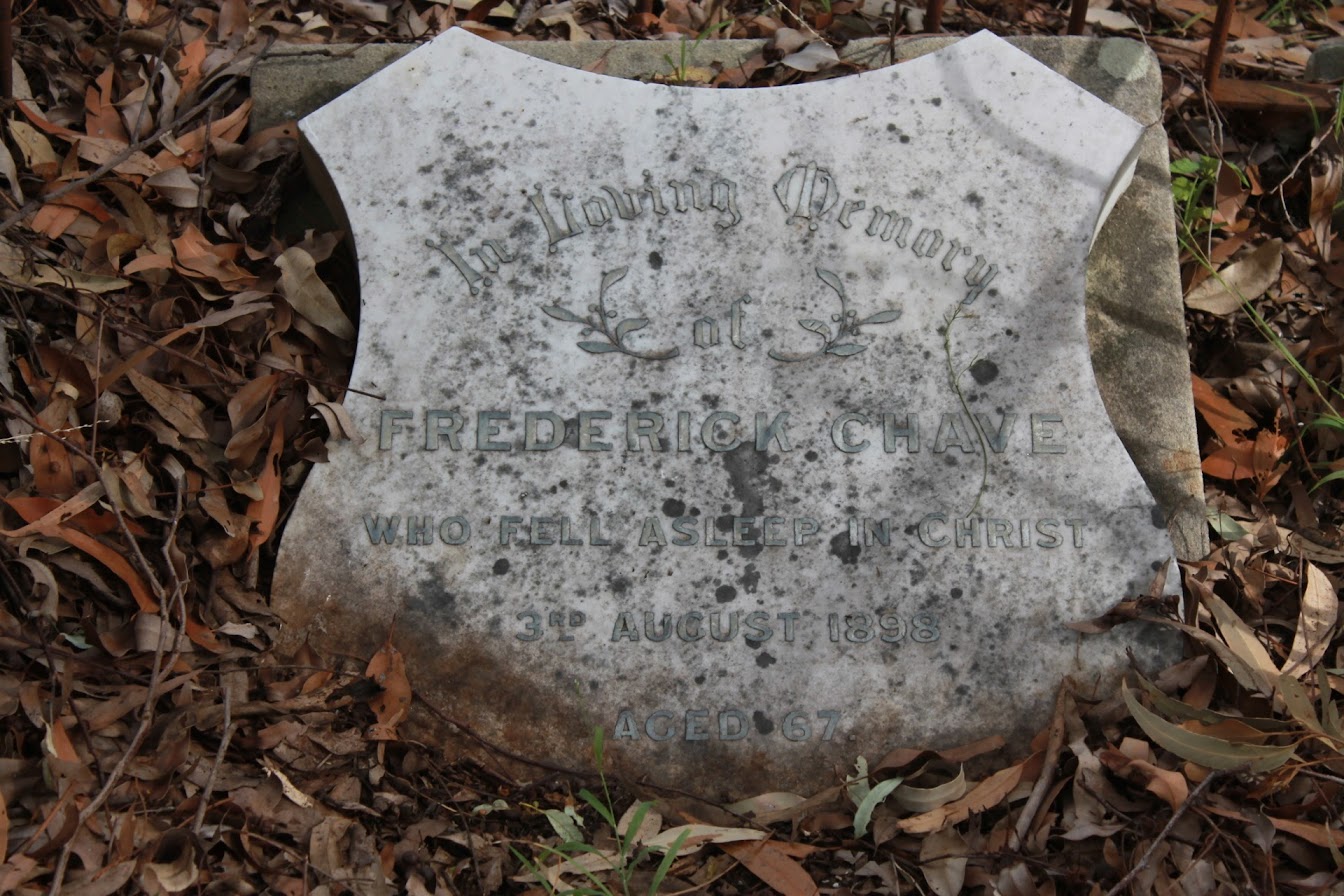
Rosamund May Creagh (1913 – 22 May 1915)
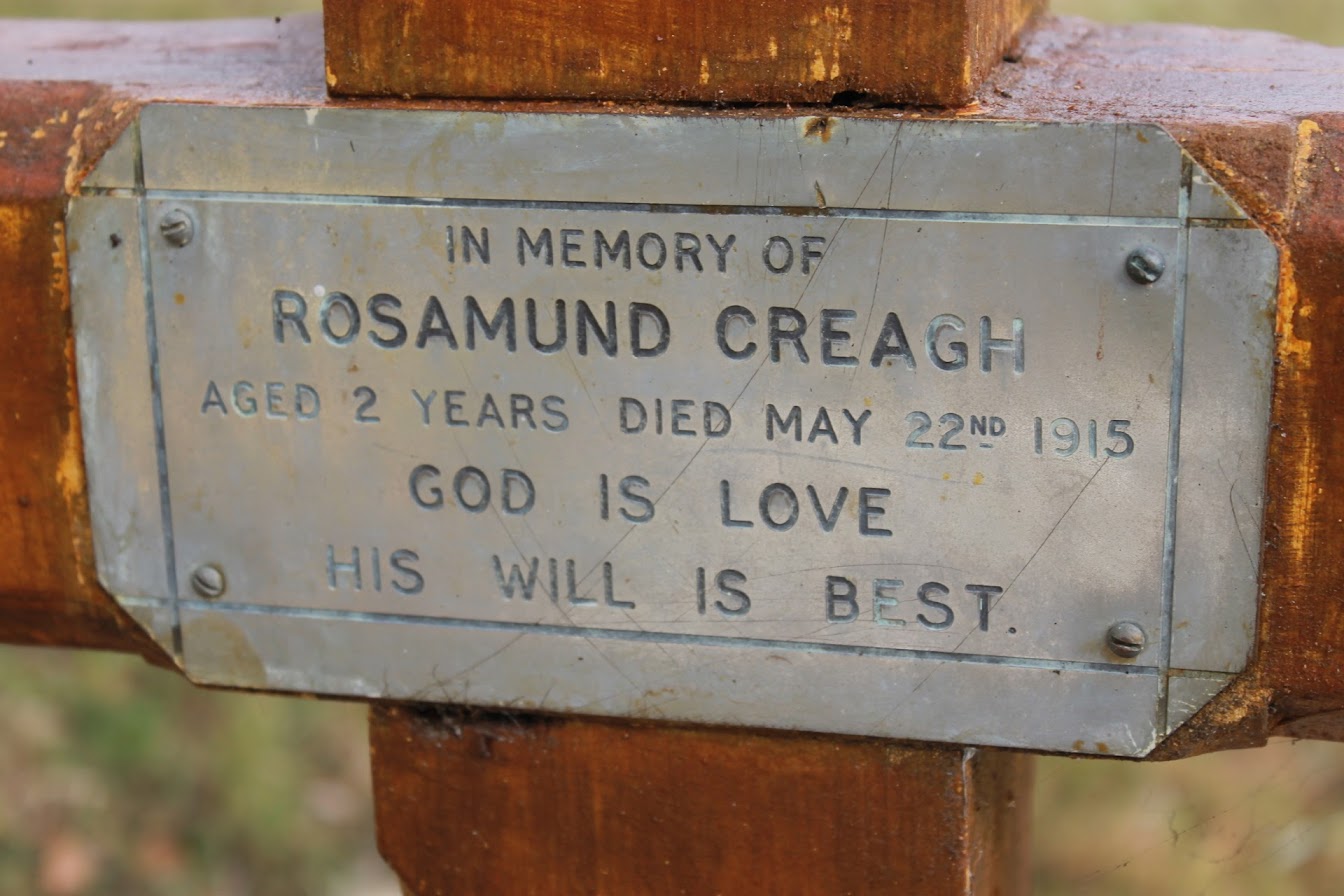
Lily M Fahl (July 1887 – 16 Jan 1888) - no known marker - just the site
A concert took place in the Public School, Pittwater, on Saturday evening last. The proceeds were to purchase a croquet set for the girls and a cricket set for the boys of the school. The programme consisted of ... items, songs, duets, recitations, readings and instrumental music, all of which paused oft' most creditably. Much valuable assistance was rendered by the following ladies and gentlemen of Sydney and the district Miss Buchanan, Miss Chane, Miss Alice Chane (Chave), Miss Elsie Chane, Miss Fahl, Miss Gracie Green, Mr. Aitken, Mr. Giles, Master Chane, Mr. F. Chane, Mr. Beverley, Master F. Fahl, Mr. Cox, Mr. Scott and others. The school children sang with great zest. Credit is due to Mr. Morrison, the school teacher, for the manner in which he arranged the concert. AMUSEMENTS. (1888, June 19). The Daily Telegraph (Sydney, NSW : 1883 - 1930), p. 6. Retrieved from http://nla.gov.au/nla.news-article237210628
NB; 'Chane' has been misspelled - this would be the 'Chave' family.
Freidrich Fahl was born in 1843 in Prussia – before moving to Australia he was apparently a river Captain, an occupation he persisted in here. Freidrich married Margaret Mary Tomlin (1857 - 1941) on 7 Jul 1873 in St. Thomas' Church of England, North Shore, Sydney
More in: Stealing The Bush: Pittwater's Trees Changes - Some History Stealing The Bush: Pittwater's Trees Changes - Some History
Julius James Frerichs (1841 – 27 Feb 1907)
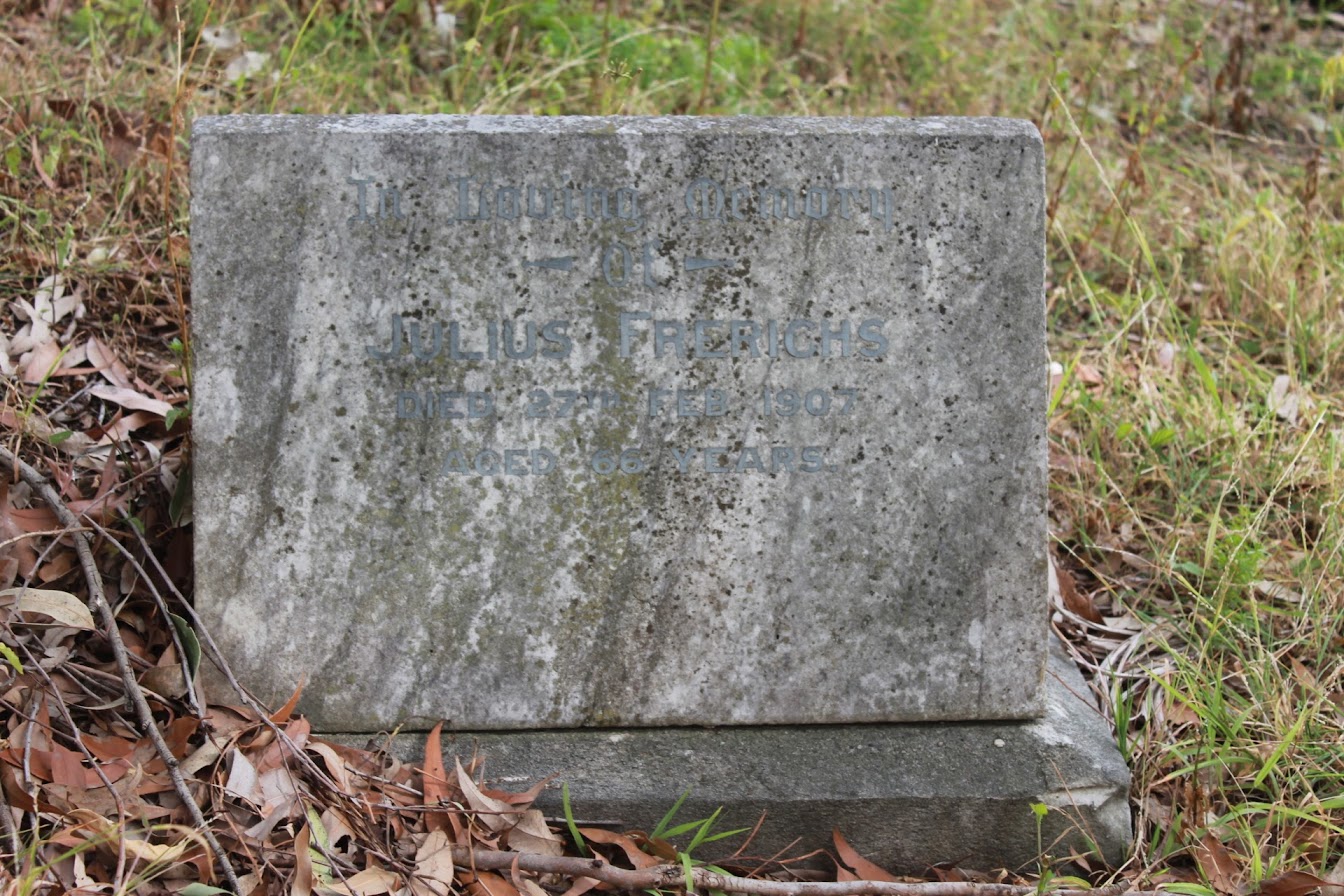
Alice May Johnson (1878 – 10 Aug 1898)
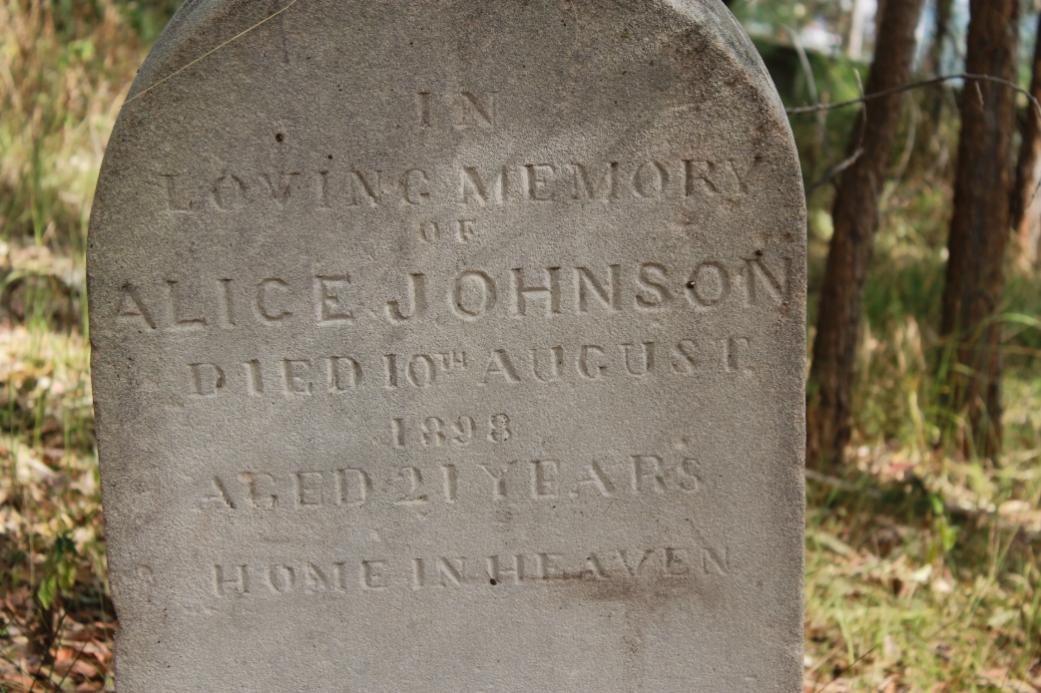
Mary Brown Oliver (1804 – 12 Jul 1879)
Thomas Albert Oliver (1843 – 7 Feb 1918)
William Oliver (1805 – 30 May 1882)
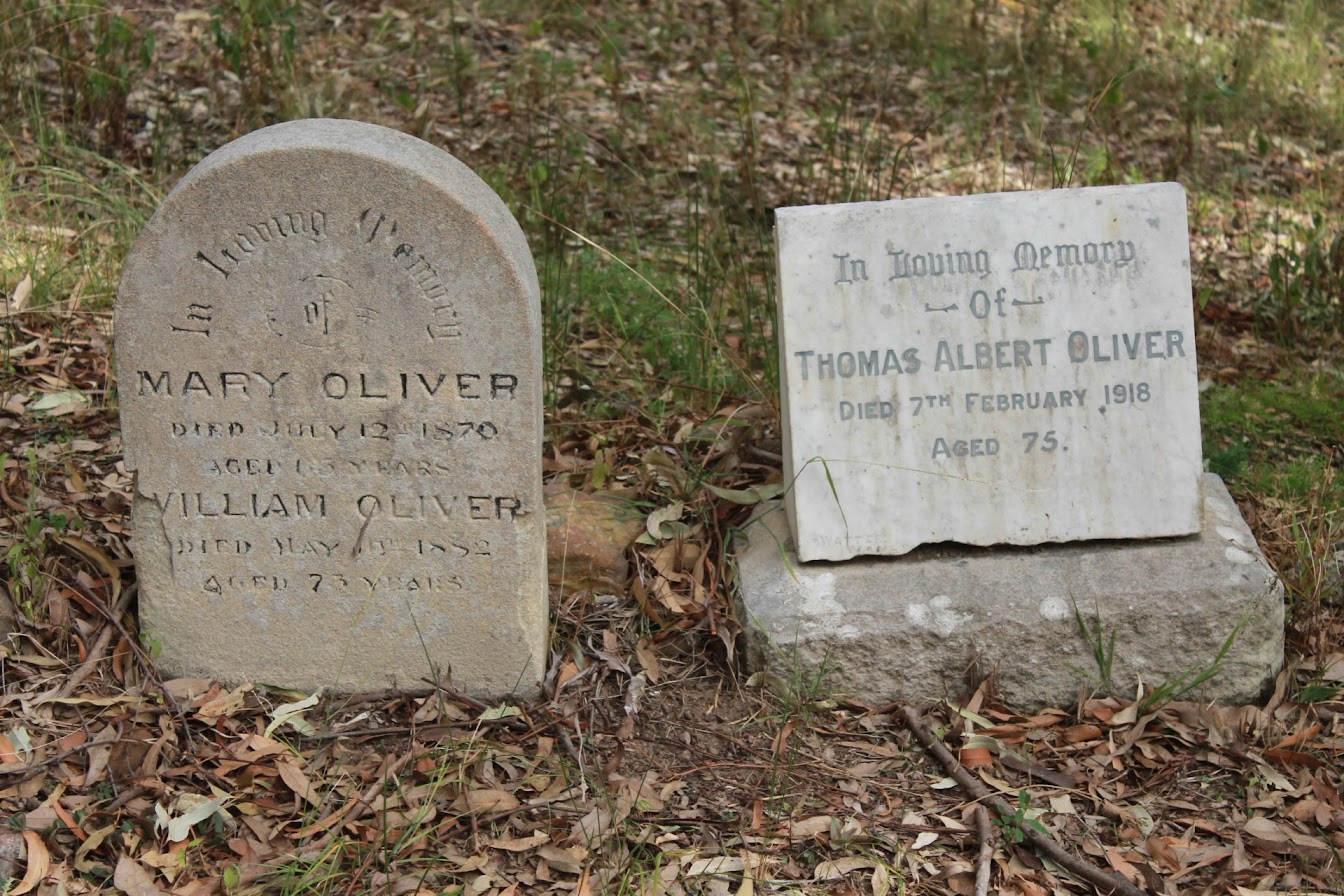
John Redman (1810 – 25 Apr 1888)
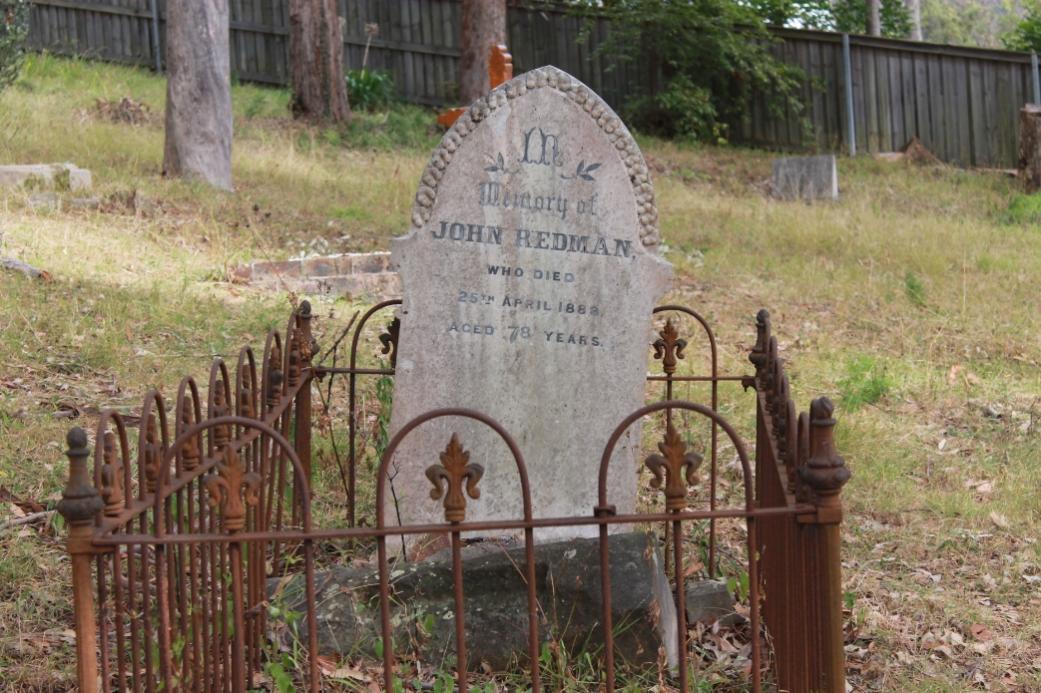
REDMAN.— At his residence, Pittwater, John Redman, in his 75th year. Family Notices (1888, April 26). The Australian Star (Sydney, NSW : 1887 - 1909), p. 4 (FIRST EDITION). Retrieved from http://nla.gov.au/nla.news-article229943738
In the Supreme Court of New South. Wales. ECCLESIASTICAL JURISDICTION.
In the will of John Redman, late of Pittwater, near Sydney, in the Colony of New South Wales, Esquire, deceased.
NOTICE is hereby given that after the expiration of fourteen days from the publication hereof in the New South. Wales Government Gazette, application will be made to this Honorable Court, in its Ecclesiastical Jurisdiction, that probate of the last will and testament of the abovenamed deceased, who died on or about the 24th day of April, 1888, may be granted to Benjamin James, of Sydney, Esquire, and John Redman, of the same place, gentleman, the two executors in the said will named.—Dated this 1st day of May, a.d. 1888.
STEPHEN, JAQUES, & STEPHEN,
Proctors for the said Executors,
81, New Pitt-street, Sydney. ECCLESIASTICAL JURISDICTION. (1888, May 4). New South Wales Government Gazette (Sydney, NSW : 1832 - 1900), p. 3195. Retrieved from http://nla.gov.au/nla.news-article222760791
Carrington Centennial Hospital.
We have received from the secretaries of the above institution a letter, with a printed circular enclosed, soliciting our aid in making known its origin and objects. We have previously done this to the best of our opportunities ; and the splendid gift of Mr. Paling, together with the salient features of his "noble and patriotic movement," have by other means been so prominently placed before the reading public, that they must already be tolerably familiar with them, and the result will no doubt be, as the joint hon. secretaries desire, "a warm and generous support to the institution by the public."
A few important facts, however, which we gather from the circular-letter referred to, will be of interest:—The Alpha Cottage, on the Grasmere Estate, which was furnished and provisioned by Mrs. Paling and her daughters, is already occupied by convalescent patients; and the committee have received and accepted an offer from the late John Redman, Esq., to erect a cottage at a cost of £500. It has been determined to proceed at once with the erection of a Convalescent Hospital for one hundred patients, and the building committee are at present engaged with the architect in the preparation of plans. The building committee have also been instructed to prepare plans showing the sites which will be available for the erection of cottages by institutions, private benefactors, or associated bodies. Carrington Centennial Hospital. (1888, August 8). Bowral Free Press and Berrima District Intelligencer (NSW : 1884 - 1901), p. 4. Retrieved from http://nla.gov.au/nla.news-article118274714
Jane Skillicorne (1816 – 20 Feb 1891)
SKILLICORNE.—February 20, at the residence of her sister, Mrs. Mulligan, Bayview, Pittwater, N.S.W., Jane Skillcourne, aged 76 years, late of Opawa, Christchurch, New Zealand. Family Notices (1891, February 28). The Daily Telegraph (Sydney, NSW : 1883 - 1930), p. 1. Retrieved from http://nla.gov.au/nla.news-article235891942
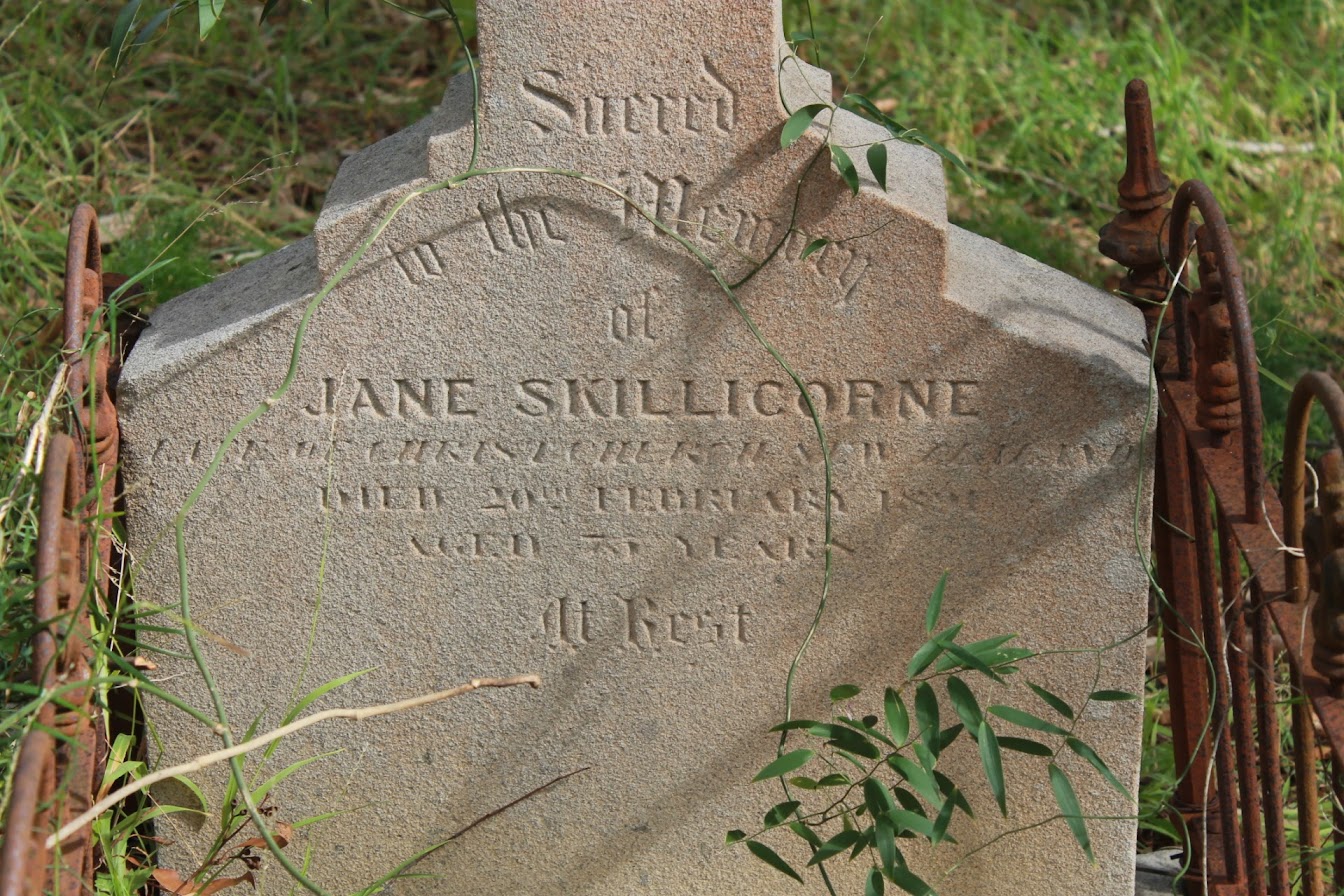
Albert Henry Turner (1847 – 6 May 1892)
Although the MWPHS pleaded with the owners to look after this space, Council records from the 1950's forward show it is the council that ensures the lawn gets mowed and residents of Church Point who attend to other maintenance of the site, on a volunteer basis. Obviously relatives of some of the loved ones at rest here would have been among that number.
CHURCH POINT CEMETERY.
The authorities of the Methodist Church have been asked by the Manly and Warringah Historical Society to protect the little cemetery at Church Point, Pittwater. The cemetery is the burial-place of many of the Pioneers of the district. CHURCH POINT CEMETERY. (1936, April 3). The Sydney Morning Herald (NSW : 1842 - 1954), p. 17. Retrieved from http://nla.gov.au/nla.news-article17327045
However the above also hints that the owners had plans to capitalise on the land bequeathed to them. God's Acre lost land in 1949 - as listed above.
In 1970 the Trustees decided to sell another section of the land and commenced advising descendants as well as the then Warringah Shire Council - the National Archives of Australia documents pertaining to the same read:
In 1970 the Trustees decided to sell the land and commenced advising descendants as well as the then Warringah Shire Council - the National Archives of Australia documents pertaining to the same read:


However, they ended up selling only a portion of what was left, retaining those sections where the man who had gifted the land to begin with, along with members of his community, had been interred - the Certificate of Title in Vol-Fol 6019-41 shows what was left:
.jpeg?timestamp=1743820295650)
.jpeg?timestamp=1743820373820)
PAGE 35 B.P. REF. 312 Report to Finance, Property, Staff and Industrial Committee Meeting, Wednesday 21st June, 1978.2.0 PROPERTY - LAND ACQUISITION/DISPOSAL MATTERS /MO 2.1 CHURCH PROPERTY - CORNER PITTWATER ROAD AND QUARTER SESSIONS ROAD, CHURCH POINT. (File No. SF 3901/LC)A letter has been received from the Uniting Church in Australia stating that as a result of the inauguration of the Church it has become necessary to consider rationalisation of church properties, and it may wish to dispose of the above property in the immediate future. The land is currently zoned Part Special Uses 5(a) Cemetery and part reserved for County Road Widening.The present owners requested as far back as October 1970 and more recently in March 1974, that Council include a change in zoning in Amendment 11. This was done, and the proposals in this amendment are:-(i)part county road reservation (same as that in pre- scribed scheme),(ii) part special uses - cemetery (small area to the southern side of (i) to protect the historical grave sites),(iii) remainder as Residential 2(a). Inspection of the site shows that it is well treed and is sloping with an average grade of C.1:6.The Council's Surveyors have investigated this site and advise that Quarter Sessions Road is inaccessible to vehicular traffic between Eastview Road and Pittwater Road, and owing to the steep grade and its width of only 33 feet, it is unlikely that it would ever be constructed. There is a footpath along this section and provided pedestrian passage is maintained, the road could be closed.Council owns Lot 15 and 15A on the east side of the road, and if Lot C, the cemetery on the west side was also purchased, Council would own one uninterrupted parcel of about 3,300 square metres. This would be subject to the Department of Main Roads widening shown on the sketch attached but of unknown precise width.The Design Engineer advises that the Department of Main Roads widening is only tentative due to the approved plan of Pittwater Road being a preliminary alignment proposal. The formal closure could not be accurately established for Quarter Sessions Road for approximately two years, by which time the Department of Main Roads survey and design 'should be available for Pittwater Road. Acquisition of the whole of Lot C by Council could proceed on the basis of the Department of Main Roads paying Council compensation for its road widening needs in two years time.
Report to Town Planning and Building Committee, 7th April, 1981. 3.2 LOT C. M.P.S. (R.?.) 49212, McCARRS CREEK ROAD, CHURCH POINT CHURCH POINT CEMETERY (File SF 3901/LC)1.At TPBC, 3.3.1981, Council resolved as follows:;That the Chief Town Planner report on the options open to Council regarding the proposed rezoning of the Church Point Cemetery land.; For completeness and so that Council may appreciate the implications of the options available to it in respect of the subject land, it is appropriate for the following background information to be furnished.2.The Church Point Cemetery has been in use as a cemetery for many years, with graves dating back to approximately Circa 1870. Currently there are 10 gravestones erected on the site. The Cemetery is currently owned by the Uniting Church of Australia.3.The subject land is currently zoned in the Warringah Shire Planning Scheme as Special Use _Cemetery, together with an area at the McCarrs Creek Road frontage reserved for future county road widening.4.Following a request from the landowner in 1970, Council included in Amendment No. 11 to the Warringah Shire Planning Scheme a. proposal to rezone the Cemetery site. such that the majority of the site would be zoned Residential 2(a) to enable the Church to sell the land for the purposes of one home site. The Amendment 11 proposal also proposed a small Special Uses Historical zone on which it was the Church's intention to erect a memorial to commemorate the historical significance, of the site. Furthermore, part of the site was proposed to be . reserved for future county road widening to accommodate the Department of Main Roads' proposal to widen McCarrs Creek Road.At the time the Methodist Church (NSW) Property Trust, as the owner of the land, advised that it wished to dispose of the major portion of the subject property and apply the proceeds of the sale towards the needs of the Church. The Church Trust indicated that it is willing to comply with all legal requirements involved in the proposed rezoning and also that it was prepared to take reasonable measures to relocate the various graves on the subject property and provide a fitting monument to both the persons buried on the property and to the historical significance of the site.In August, 1976, the Solicitors for the Methodist Church Property Trust wrote to Council complaining of the alleged delay in the rezoning of the Church Point Cemetery site. The Solicitors emphasised that the delay in rezoning has had the effect of denying to the Trust its right as the unrestricted legal owner of the land. ....The Solicitors further stated that although the Trust primarily wishes to dispose of the major portion of the subject property, it nevertheless is not prepared to allow the property to remain indefinitely in a position where it cannot be used, yet cannot be disposed of by the Trust. The Solicitors foreshadowed that if Council would not acceded to the Trust's request to pursue suspension action under Section 3421 of the Local Government Act, one possible result may be an application to erect a complex of buildings on the property for use as a residence for the Superintendent Minister of the Pittwater Methodist Regional Mission and as meeting rooms for the Church in the area.6.In response to the Church's request for suspension S action, Council advised it in September, 1976, that it would not recommend to the Minister that suspension action proceed, principally because it was not Council's policy to withdraw items from Amendment 11 for the purposes of pursuing suspension action to expedite rezoning.7.During 1977, the Church made numerous representations to' Council and separately to the Minister for Planning & Environment regarding securing an early rezoning of the subject land to facilitate its sale as a residential allotment.8.On 4.10.1977, the Uniting Church in Australia, Pittwater Parish, wrote to Council advising that it was considering the sale of the Church Point Cemetery. The Church requested Council to advise if it would be interested in acquiring the property. This proposal was considered at length by Council including the carrying out of a detailed survey of the land and the gravesites thereon.The Property Management Panel reported to Council on 21.6.1978, stating, inter alia,; the, Property Management Panel considers that it is desirable that this Council retain this local .monument to the pioneers of the Church Point district and also by so doing, develop , the whole area as a small parkland reserve of great historical interest;. In considering this report, Council resolved: ;That a documented ,valuation be 'obtained for consideration' in the 1979 draft Estimates;.9.This matter was considered by council in conjunction with the 1979 Estimates, however, no provision was made to facilitate acquisition. In August, 1979, the Minister for Planning & Environment certified the Warringah Shire Planning Scheme Amendment No. 11 for the purposes of public exhibition. The subject land was included in the certified scheme as outlined 'above.'....Council has received a letter dated 2.2.1981, from the National Trust of Australia (N.S.W.), advising that it F2, has become aware of Council's Amendment 11 Scheme as it relates to the Cemetery site.The Trust states that members of its Cemeteries Committee visited the subject Site during September, 1979, and have recommended that the site be classified and included in the Register of the National Trust because of its historical significance and its beautiful landscape setting and outlook. The Trust states that this Cemetery is intrinsically linked with the history of Church Point, the Oliver Family who donated the land to the Methodist Church are buried there, and the name of the Point was derived from the Church which was built by the Methodists.The Trust states that it is vitally concerned with the preservation of this site and consequently is opposed to the proposed zoning. Any development on the site would result in the loss of integrity of what is a fine example of a simple bush cemetery. 16. Apart from the foregoing background it is appropriate for Council, in considering the options available to it, to have an appreciation of the setting in which the Church Point Cemetery exists.The Cemetery is considerably elevated above McCarrs Creek Road on its south side. The site has an average gradient of about 1:6 and it is well treed. The site.is situated directly above Church Point, on the lower section of a spur protruding into Pittwater from Bayview Heights.From every part of the site, very considerable views of Pittwater, Scotland Island and the Western Foreshores of Pittwater are available. Lying to the east of the Cemetery site is a public road reserve approximately 10m. wide. This road reserve contains a pedestrian pathway with intermittent steps. No vehicular access facilities exists along this road.To the east of the road. reserve, Lots 15 & 15A are owned by Council. These lands were acquired by Council in2 March, 1941. Their area comprises approximately 1,240m . The current state of this Council owned land is that it is undeveloped and densely overgrown with vegetation. On the other hand, the Church Point Cemetery is well maintained; particularly by grass mowing which is carried out by this Council.It is considered, that the Church Point Cemetery, the existing road 'reserve and the Council owned land, when appropriately improved, would create a very worthwhile historic and passive open space precinct in this very significant and prominent area of the Shire.17. Council should also be aware that as advised in the Local Government Bulletin, March, 1981 Edition, the National Trust (N S 4 ) is undertaking a survey of historic burial grounds in the State in 'conjunction with the Society of Australian Genealogists and the Heritage ' and Conservation Branch of the Department of Environment & Planning.The Bulletin article states that a survey of approximately 250 burial sites in the Sydney Metropolitan Region has been completed and in processing information from this survey, strategies have been developed to ensure the protection and restoration of significant sites with the assistance of bodies like the Heritage Council of N.S.W. and the Australian Heritage Commission.18.Verbal contact has been made with the N.S.W. Heritage Council and it has been established that following representations to it from independent persons it has carried out an examination of the Church Point Cemetery site.Following this examination, the Heritage Council' has submitted a report to the Minister under the Heritage Act, 1977, in relation to the possibility of the introduction of an interim conservation order in respect of the land.At the date of writing this report the Minister had not made a decision in relation to this matter. 0 19.Further to the foregoing background to this matter, it would appear that there are now a number of options available to Council in relation to the Church Point Cemetery site, viz:_(a)Do nothing - on this basis Amendment 11 will rezone the site, substantially Residential 2(a) to facilitate a subdivision and development for residential purposes. A small portion of the land will be retained by the Church and a memorial erected. The balance of the site will be sold to the Department of Main Roads for road widening.(b)Council may submit a late objection to the Department of Environment & Planning to Amendment : No. it. Such an objection could be to delete entirely from the Amendment 11 scheme the subject property and thus retain the existing Special Use Cemetery zone and reservation for future county road widening, as currently apply under the Warringah Shire Planning Scheme.(c)Request the Governor under the Clause 42 of the Warringah Shire Planning Scheme Ordinance to make a proclamation declaring the subject land to be a place of scientific or historic interest. .(d)Advise the Heritage Council of N S W that Council would support the making of a permanent. conservation order by the Minister in respect of the subject land, pursuant to Section 36 of the Heritage Act, 1977(e)Council may request *;the Minister administering the Heritage Act, 1977. to acquire the Church Point Cemetery site under Section 112 of the Heritage Act, 1977
Report to Finance, Property and Staff Management Committee, 8th December, 19812.0 PROPERTY LAND ACQUISITION/DISPOSAL _2.4 .CHURCH POINT CEMETERY - LOT C., M.P.S. .(RP) 49212, McCARRS CREEK ROAD, CHURCH POINT - REQUEST TO ACQUIRE. (File: SF 3901/LC)The above property is owned by the Uniting Church. of Australia Property Trust (N.S.W.). Solicitors acting on behalf of the Trust have written to Council offering the property for sale to Council. They indicate that they require a sale price of $55,000 which they understand to be the current. Valuer General's valuation figure.They suggest that Council should acquire the property for open-space purposes as an historical site. They also point out that the offer constitutes a re-offer of the property as negotiations had taken place with Council as far back as 1976. They state that in July, 1979, the then Property Officer, contacted the Uniting Church to ascertain if the offer of sale to the Council was still open and after discussion they were advised in October, 1979, that the property would be included in Council's 1980 estimates for purchase.There is no evidence on the relevant file that any authority had been given by Council to negotiate the acquisition of the property. The subject property was included in Amendment 11 for proposed zoning to allow residential development. In April this year Council, as a result of submissions from local residents, advised the Department of Environment and Planning that it objected to the Amendment 11 proposals for the subject land and sought to retain the existing zonings under the current planning scheme.The existing zoning is Special Uses in the Warringah Shire Planning Scheme - Cemetery. Subsequently, the Heritage Council of Australia, with support from Warringah Shire Council was successful in an application to the Minister for an interim conservation order. This order lasts for a period of two (2) years and effectively freezes any development of the site 'during that time.During this two (2) year period consideration will be given to the issue of a permanent conservation order to preserve the property as an historical site. The Uniting Church Trust states that it sees itself as having a duty to use the assets committed to it to the best advantage in furthering its aims and objects and to this purpose wishes to realise on its asset. It sees Council as being the only possible purchaser of the property in the circumstances.RECOMMENDATION: That the Property Management Panel's Recommendation be adopted viz: The the land owner be advised that, although acquisition of ...
Improvements were to include an upgrade to the street access and pathway, landscaping, and the installation of a viewing platform, seating and heritage information signage to improve amenity and increase visitation.
“The historic cemetery at Church Point is a peaceful site in which visitors can explore and reflect,” Rob Stokes said at the time
“It’s a reminder of the pioneering days of our community and I’m delighted the NSW Government can assist in preserving our local heritage.”
Some more photos from July 2023 + 2014:
In 2014:
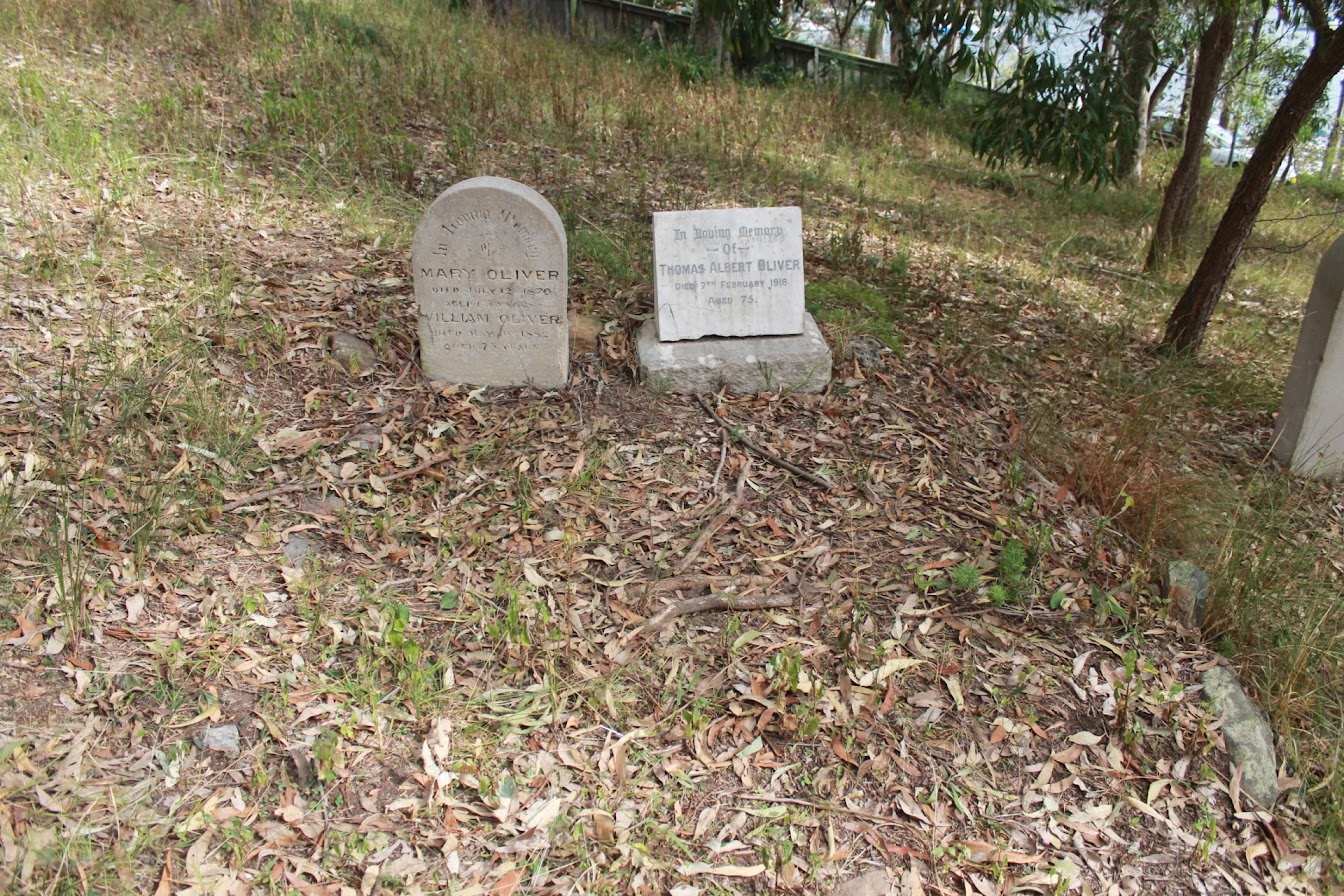

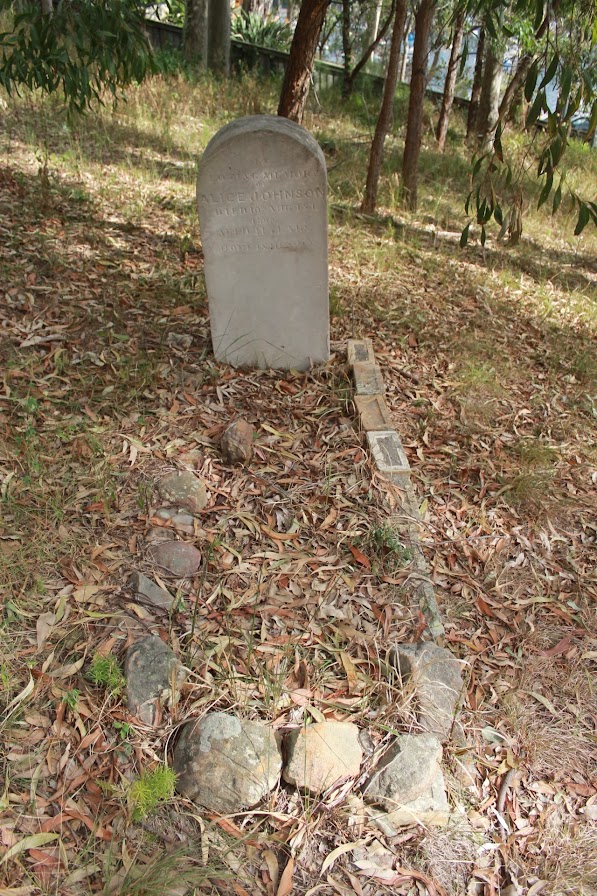
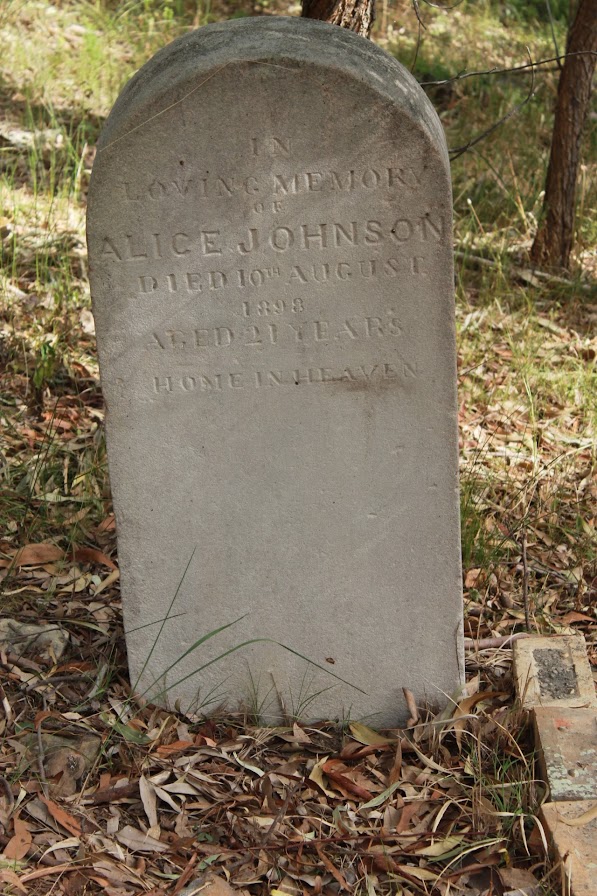

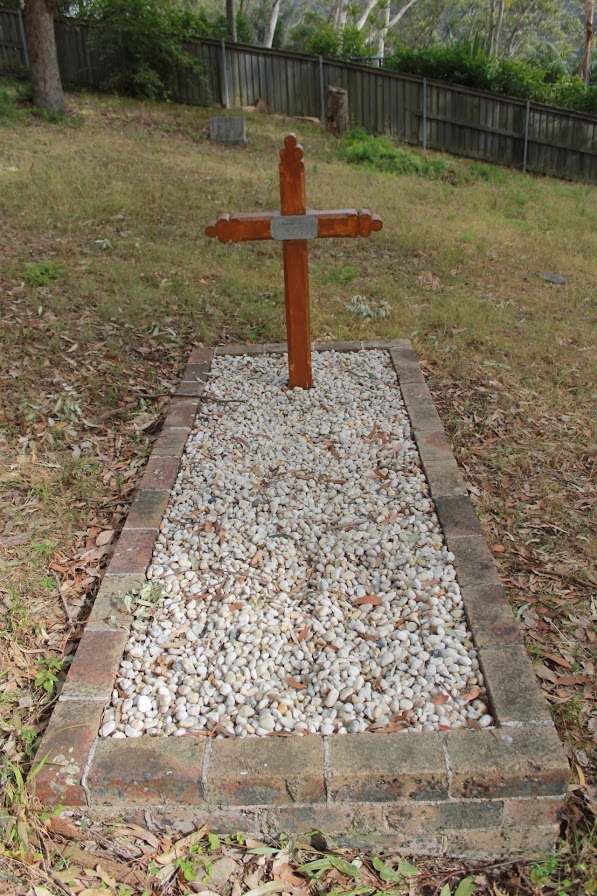
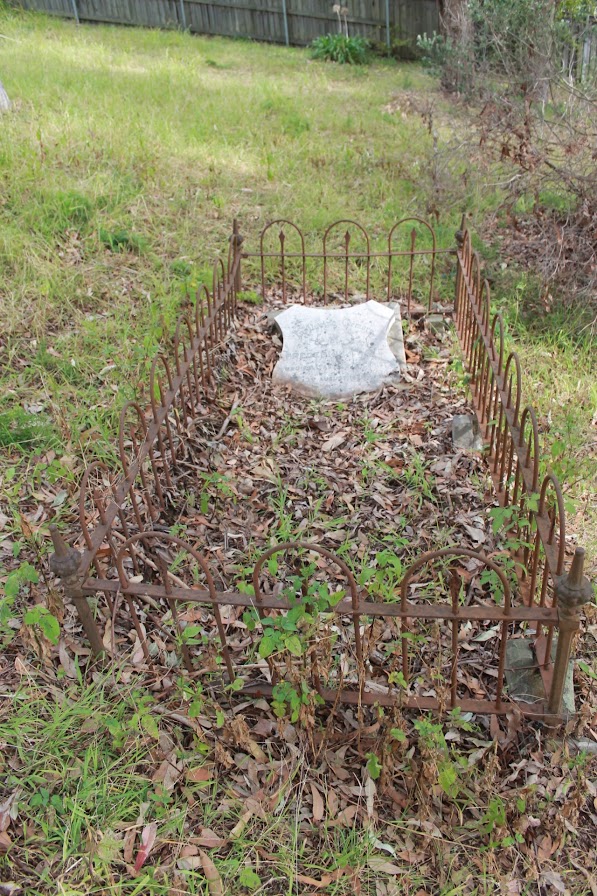


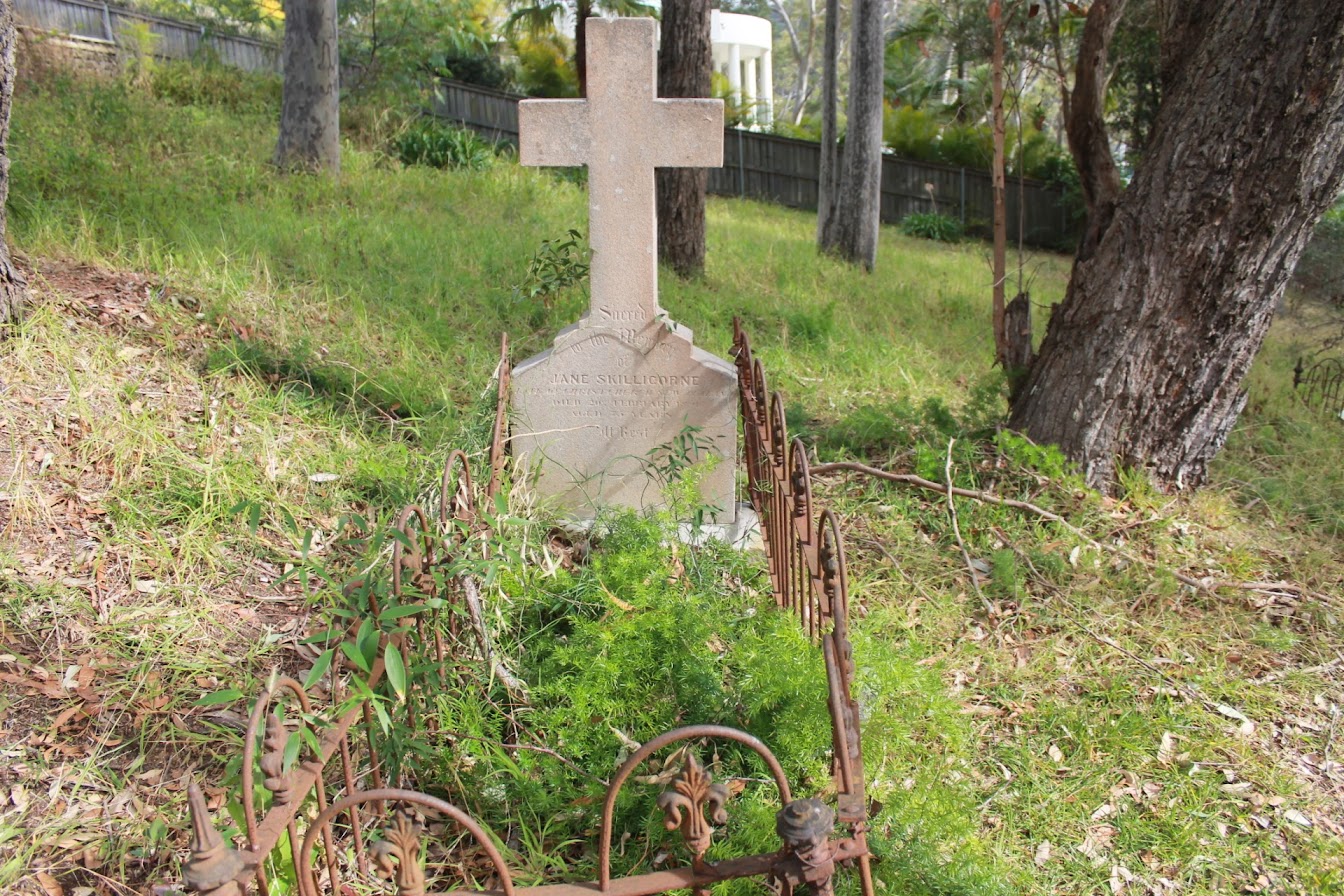

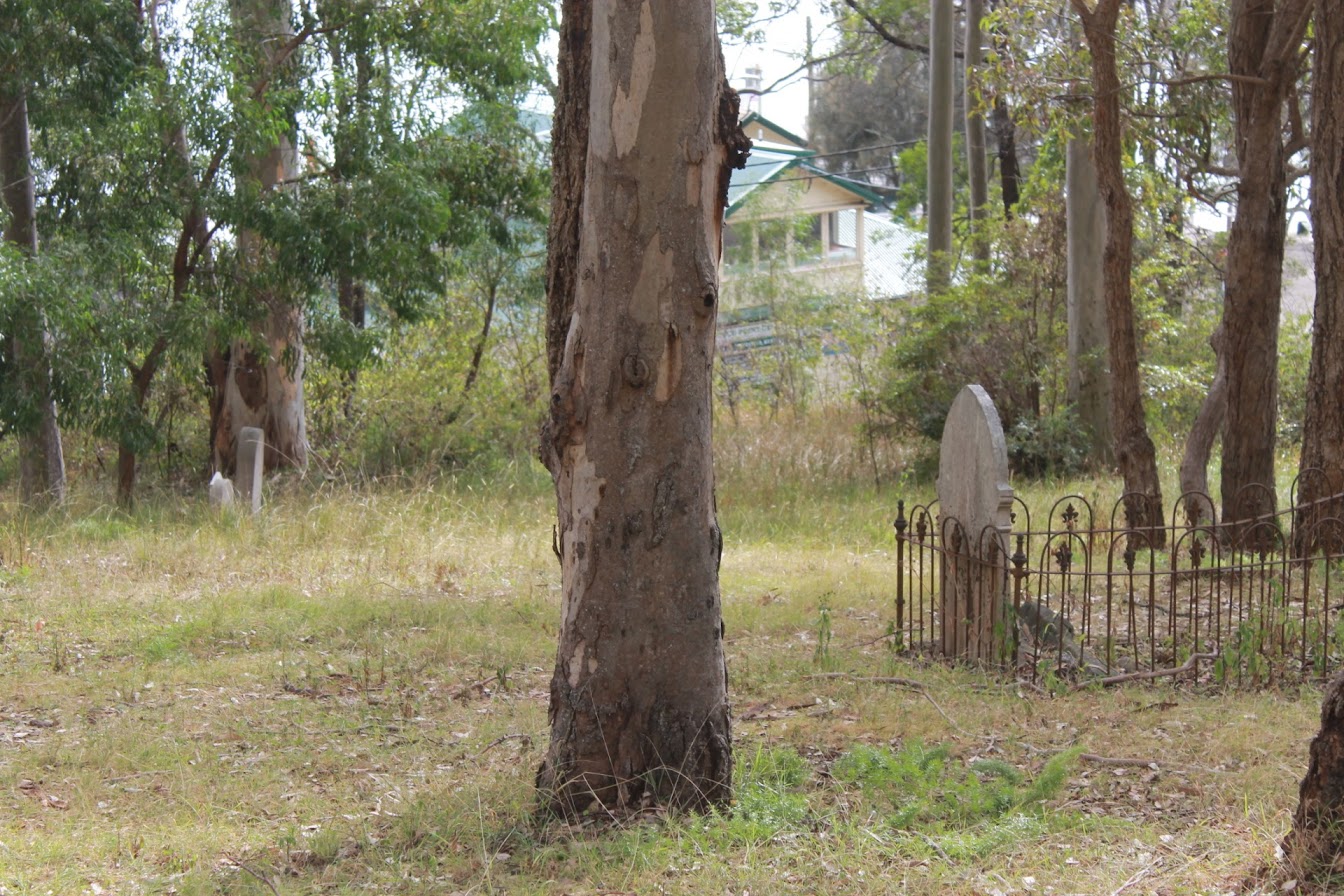
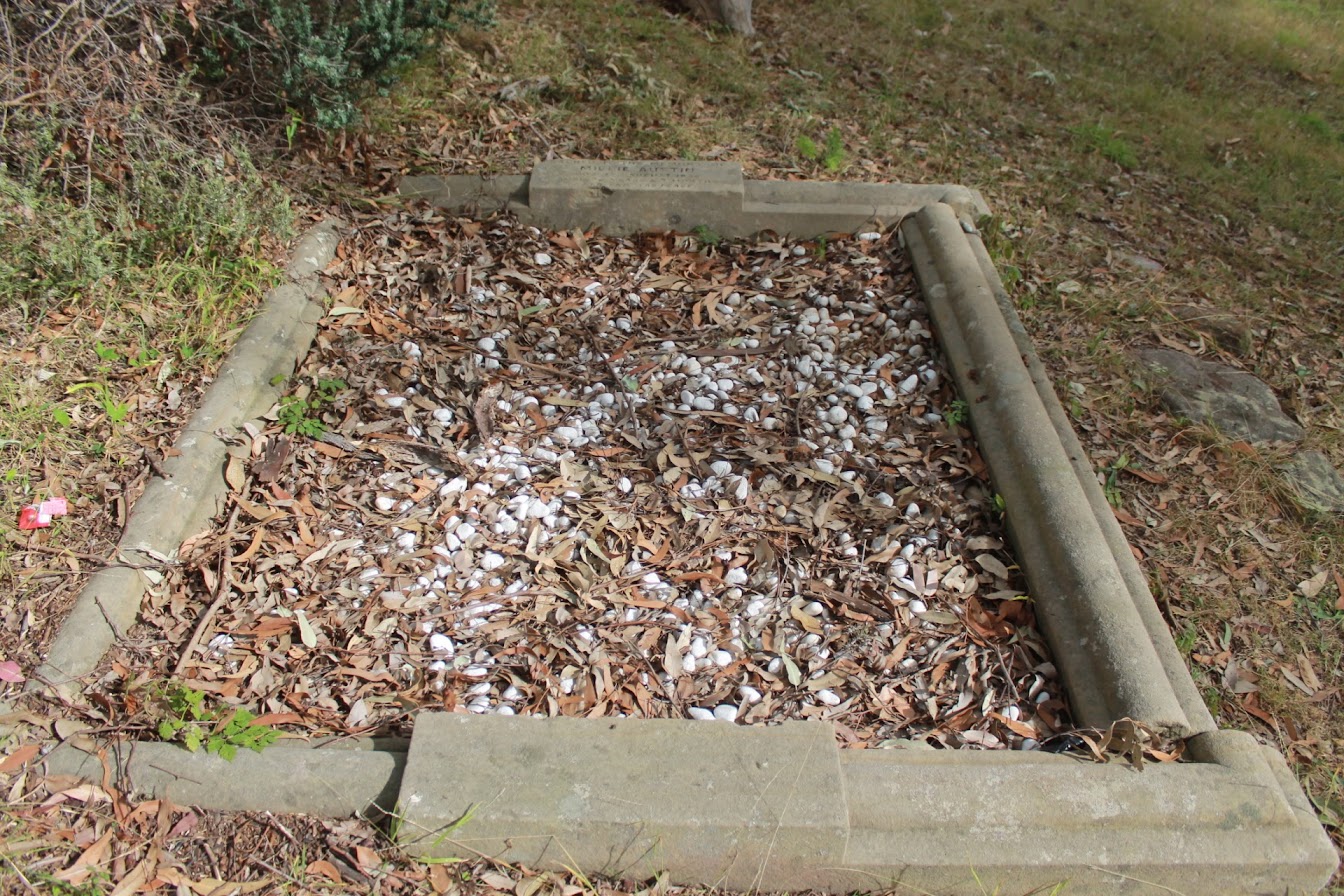

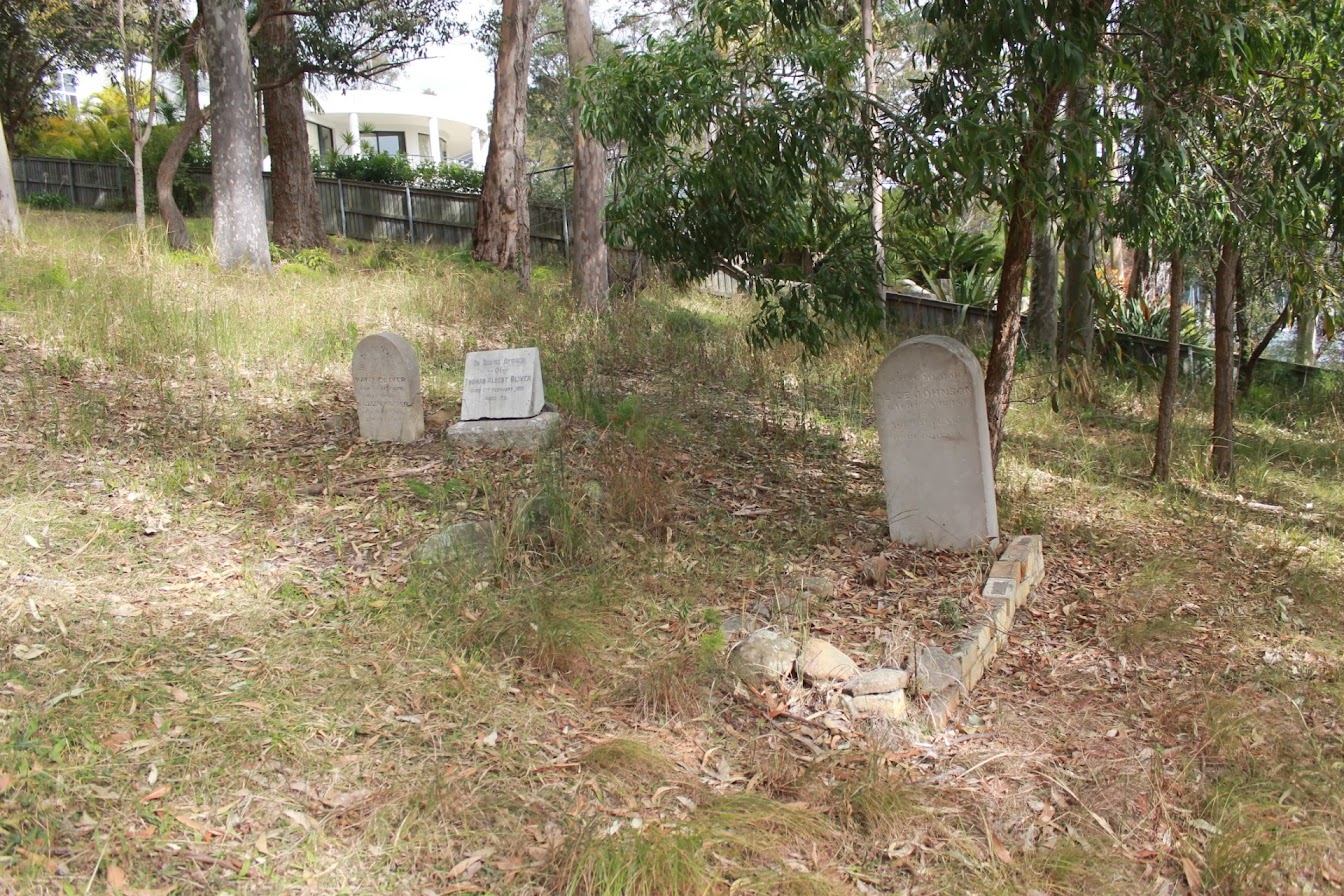
Notes - Extras
William Oliver - land grant at Church Point: 66 acres east of Browns' 41 acre grant.
William Oliver Church Point land – Vol- Fol 115-110 – 1871 - becomes Vol Fol 129-63 after God’s Acre taken out becomes, which is sold to Thomas Wilson and Charles Johnson Vol Fol 225 – 202 (Wilson; 23 acres 3 roods) and 225-202 (Johnson; 40 acres – the 1 acre for church came out of this – transferred lodge 22nd April 1884) Charles Johnson sells 37 acres of his land to Walter Hugh Tibbitts MD of Manly Vol-Fol 776-65 – the residue is in Vol Fol 740-4 – 2 acres
Thomas Wilson: Vol – Fol 225- 201
23 acres – sells one lot to Ada Pritchard and 16 acres to de Kantzow – 7 acres residue.
October 27th 1890 – Benjamin James and John Redman to Edith Maude Baker – same date from Edith to Benjamin James of Sydney
December 22nd 1890 – Benjamin James to Philip Charley of Belmont Park, Richmond, Esquire
August 30 1911 Philip Charley to Arthur Morris Simpson of Pittwater, Grocer
August 30 1911 Mortgage from Arthur Simpson to Samuel Hordern of Sydney, merchant – entered in Certificate of Titles September 18, 1911
Simpson’s father knew him – they were neighbours at Woollahra:
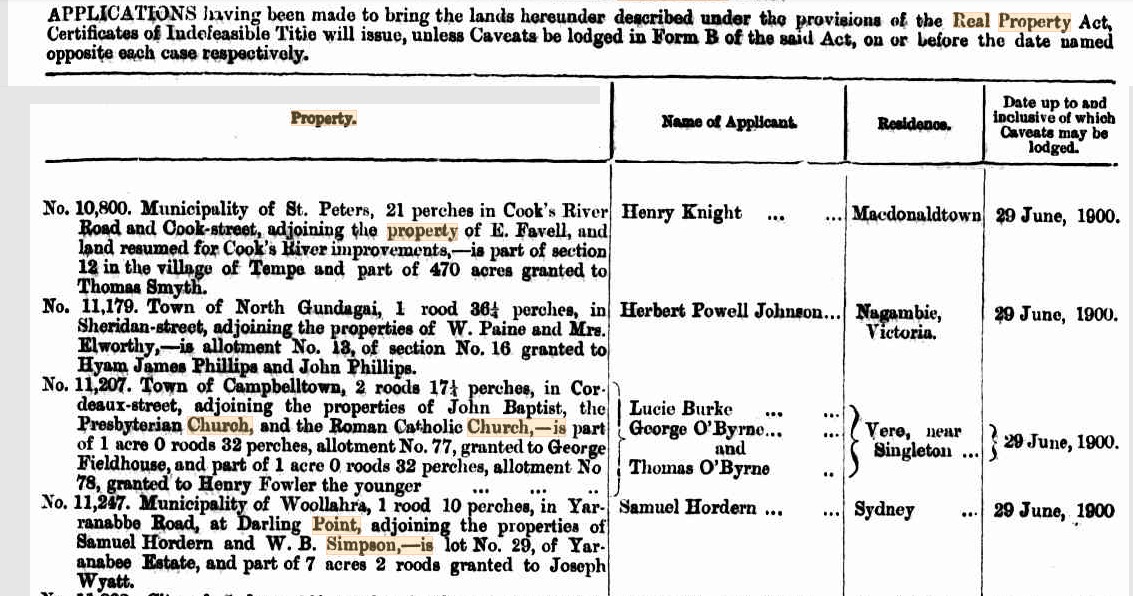
NOTICE UNDER REAL PROPERTY ACT. (1900, May 11). New South Wales Government Gazette (Sydney, NSW : 1832 - 1900), p. 3669. Retrieved from http://nla.gov.au/nla.news-article222498592
December 22 1911 – Arthur Morris Simpson, with consent of Mortgagee to Ada Ellen Pritchard, wife of James Gray Pritchard of St. ? - Vol Fol 2700-110: 1 rood 33 ¼ perches on Bay View Road - The Melrose property was transferred by Benjamin James to Philip Charley on 22 December 1890; then by Charley to Arthur Morris Simpson on 30 August 1911; and then by Simpson to Mrs Ada Ellen Pritchard on 22 December 1915. It remained in the Pritchard family as a private residence.
Vol Fol 3168-174: Charles Adolphus de Kantzow – 16 acres the ‘residue of the land’; Simpson Garden and then Baroona Estate – Simpson held onto 7 acres?
The Green Frog property (lots 7, 8, 21 and 22 with a house on lot 7, on the above map) was transferred by Simpson to de Kantzow and then to Herbert L. Alford and his wife on 4 February 1923, and remained the property of the Alfords.
In February 1923 the property was purchased by Herbert Lionel Somerset Alford ( 5th of November, 1876 – 28th of May 1947) and his wife Ida Mary, nee Griffiths (?- 1970) whom he married in 1908 (registered at Mosman). Mr Alford was the eldest son of Charles George Alford who became a chief in the Bank of New South Wales Their land comprised Lots 7, 8, 21 and 22. A dwelling on Lot 7 becomes the premises at which the Alfords run their tearooms and boarding house called ‘The Green Frog’.
On 11 November 1929 Herbert Lionel Alford transfers Lot 15 & 15A to Frederick Wymark of Sydney, bookseller. Wymark has a mortgage to Alford which is discharged on 27 December 1933. 1934 On 2 January 1934 Frederick Wymark transfers Lots 15 & 15A to Herbert Lionel Alford (who had owned the lots previously). Lots 15 and 15a become Warringah Shire Council land and are a reserve. It is these that Lucy Richards wants the public lavatories in front of her home around the corner moved to.
Lot 1 sold to William Newcombe on November 22nd 1912 Vol/Fol: 2321-4. 1 acre, 3 roods 6 ½ perches. Permanent Trustee Co becomes in charge June 11th 1917; they sell to Alfred Ernest Burton, Printer, May 20th 1918, Burton to Frederick Wymark Bookseller, on March 19th 1930, Wymark to Lucy Richards October 12th 1933, she sells part to Lawrence Edward McDonnell of part (Vol/Fol: 5444-118 – April 24th 1944 – 1 acre 34 ½ perches) and retains Vol/Fol: 5465-29; 2 roods and 12 perches remains hers (2326.90 square metres) and is sold by Browne and Lamplough in 1951 after her Will passes probate. Today the property has 2,068m² of land.
Next door, and over one block towards east in today's residential blocks settings, was the Church Point church, school and graveyard. The pathway up to Quarter Sessions Road as it is today, up the back of the church yard and God's acre, was the Reserve Road marked in Thomas Wilson's acreage on the other side of that current pathway.
.jpg?timestamp=1694114614674)
.jpg?timestamp=1694114649913)
.jpg?timestamp=1694114720989)
.jpg?timestamp=1694114752330)
.jpg?timestamp=1694114792925)
William Oliver to Charles Johnson and Thomas Wilson - 65 acres left after Gods' Acre for church, school and cemetery given to the community, and church for safe keeping, by William Oliver:
.jpg?timestamp=1694114396717)
.jpg?timestamp=1694114504222)
.jpg?timestamp=1694114841093)
Charles Johnson to Walter Hugh Tibbitts -
Mr. Johnson owns the land, 40 acres, 16 perches officially on February 14 1883 - he on sells to Tibbitts on December 30 1884:
.jpg?timestamp=1694114924721)
.png?timestamp=1694114976245)
.jpg?timestamp=1694115202162)
.jpg?timestamp=1694115248403)
Charles Johnson retains 2+ acres - this became the site of 'Rostrevor':
.jpg?timestamp=1694115295729)
.jpg?timestamp=1694115334323)
.png?timestamp=1694115395270)
.jpg?timestamp=1694115437036)
Walter Hugh Tibbits, 37 acres, 2 roods and 9 perches to all those that came:
.jpg?timestamp=1694115702842)
.jpg?timestamp=1694115756740)
.jpg?timestamp=1694115809988)
.png?timestamp=1694115842336)
.jpg?timestamp=1694115880366)
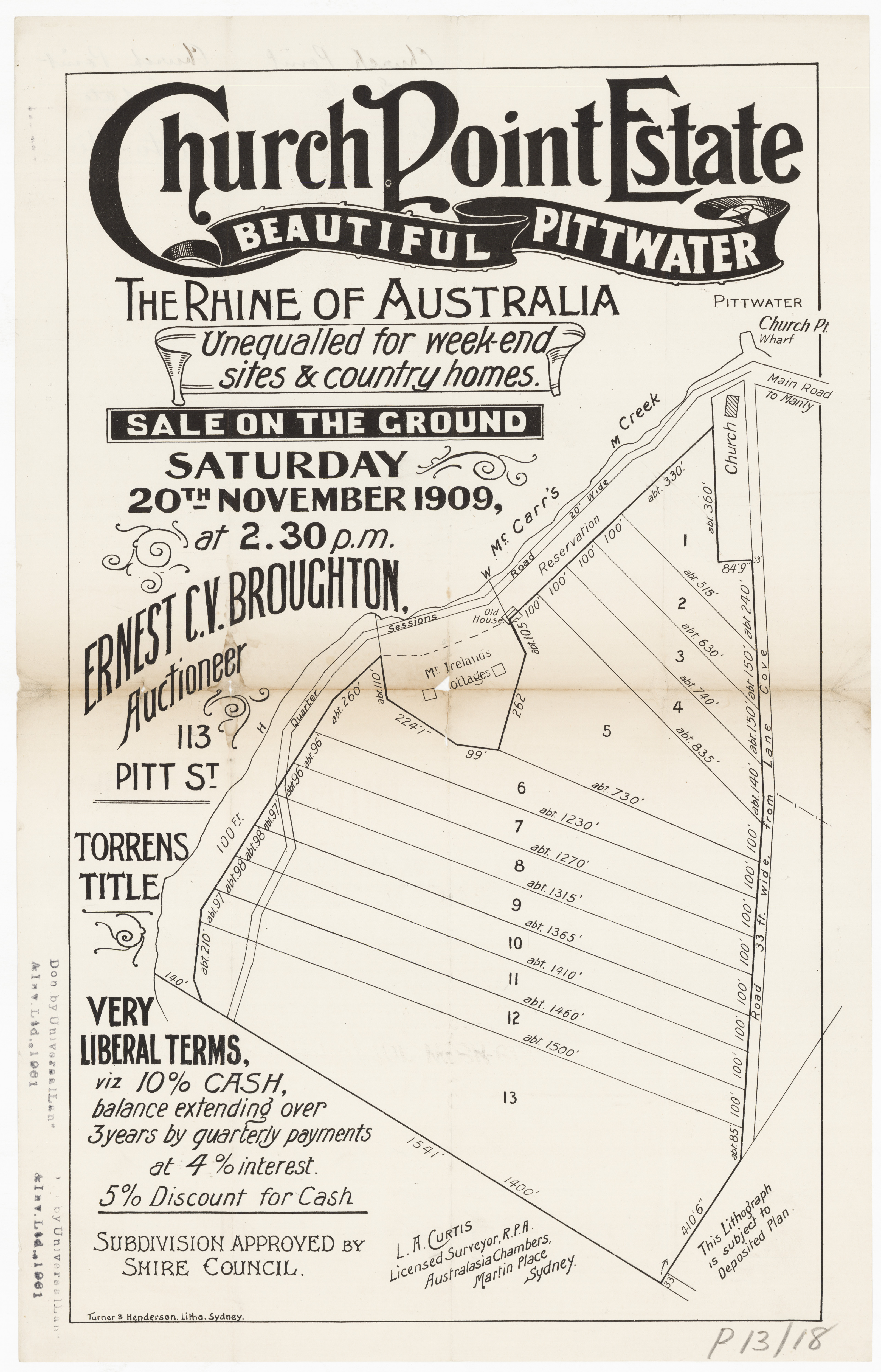
Church Point Estate - Dr. Tibbits holding; shows position of 'old house' - Item: c053460018, from Pittwater Subdivisions folder, courtesy State Library of NSW
BEAUTIFUL PITTWATER. CHURCH POINT ESTATE. THE WEEK-ENDER'S PARADISE.
ENTRANCING VIEW'S, with a scope of 100 miles of Smooth-water Navigation, suitable for MOTOR LAUNCHES and AQUATIC PLEASURE-SEEKERS.
Highly Recommended by the Medical Profession for a Week-end Rest.
AT THE CHURCH POINT WHARF, AND THE TERMINUS OF THE COACHES FROM MANLY. IN LARGE AREAS OF ABOUT THREE ACRES EACH.
Well known as the Property of the late Dr. Tibbitts. General Store and Post-office adjoining the Estate. N.B.-This is the only Land available on the mainland, and will be Sold at Bargain Prices, so the Liberal Terms of 10 per cent, cash, Balance by 12 Quarterly Payments, interest at 4 per cent, per annum-, 5 per cent. Discount for Cash. Mr. A. M. SIMPSON, Storekeeper at Church Point, will point out the Land for Sale.
SALE ON THE GROUND SATURDAY, 20th NOVEMBER, AT 2 P.M. Advertising. (1909, November 6). The Sydney Morning Herald (NSW : 1842 - 1954), p. 22. Retrieved from http://nla.gov.au/nla.news-article15084034
Mr. Ernest C. V. Broughton reports having sold: Church Point, Pittwater, Church Point Estate lot 10, £50 ; lot 5, £80 ; lots 9 and 13. £180 : SALES REPORTED DURING THE WEEK. (1910, February 6). Sunday Times (Sydney, NSW : 1895 - 1930), p. 2. Retrieved from http://nla.gov.au/nla.news-article123834590
God's Acre at Church Point
William Oliver acreage - Vol Fol 127-210 - God's Acre for Church Point chapel, cemetery and school - note that McCarrs Creek is actually named 'McGaas creek' - also note that the Trustees sold off 38 3/4 perches or 980.0980398 square metres each to Charles Mudie of Church Point, Engineer (Vol/Fol: 5997-38) and Laurence McDonnell of Manly, Medical Practitioner, (Vol/Fol: 5978-84) McDonnell onsold to the Wright Clareville men. These two land sales thereby reduced God's Acre by 1960.1960796 square metres. There are 4046.8564224 square meters in 1 acre, so around half of the original land given:
.jpg?timestamp=1694136796654)
.jpg?timestamp=1694136829474)
.jpg?timestamp=1694136864239)
.jpg?timestamp=1694136898880)
.jpg?timestamp=1694136923613)
.jpg?timestamp=1694136959207)
AN HISTORIC CHURCH
MEMORIES OF THE METHODIST CHAPEL AT CHURCH POINT, PITTWATER
The erection of the little Methodist Church at Pittwater was through the efforts of Mr. George McIntosh and Mr. William Henry McKeown, who conducted services at Bayview, under a tree. This prompted Mr. Wm. Oliver, an early settler of this district, to give one acre of land for 10/- to the following gentlemen, as joint tenants, as per the Certificate of Title, dated November 8, 1871:— George Mclntosh, William Oliver, James Jones, Thomas Oliver, John Alder - ton; William Baker, all following the occupation of farmers, and residing at Pittwater, and William Henry McKeown, of Lane Cove, also a farmer.
The little church was erected on this land in the year 1872 for the sum of £60, and the point derives its name from this little wooden house of worship (Church Point in many early records is spoken of as Chapel Point). In the cemetery lie many pioneers who passed away about half a century ago, and such a place enkindles in one's memory the lines of Gray's 'Elegy': —
''Each in his narrow cell for ever laid, The rude forefathers of the hamlet sleep.'
The Wesleyan Minister stationed at the North Sydney circuit, Chatswood or other Church in that or Artarman locality, could only visit the church about once a quarter accounts for the burials in God's Acre being taken by the Rev. R. .S. Willis, M.A.. Incumbent of St, Matthew's Church of England, Manly, up to 1890, and therefore the records of these burials are contained in the Church of England burial register at Manly.
This church was used in the week days from May, 1884, until 1888 as a public school and known as the Pittwater Public School, under the charge of Mr. S. Morrison, who now resides at Manly. It was on July 19, 1887, that the late Sir Henry Parkes paid a visit to the school in this church building, and signed the school's visitors' book. It is to be trusted that the demolition of this church will not be proceeded with, ,but that it will be restored, and again used for public worship, as the population is growing, and the nearest church is three miles away. This will save this historic place from going into oblivion. I have approached the church authorities with the hope that something may be done at the eleventh hour; even five members of my society (the Manly, Warringah, and Pittwater Historical Society) having approached me to the effect that they are willing to spend a few Saturdays, if a conveyance can be provided, to help to restore this building.
In conclusion I wish to point out that St. John's Church of England, Pittwater, on the headland near the 11 -mile peg, was the first house of prayer in the district, having been opened on September 21, 1871, and was referred to as follows: 'This small church was situated quite in the wilderness,, being the first erected in that part of the colony." — P.W.G. AN HISTORIC CHURCH (1930, June 6). Windsor and Richmond Gazette (NSW : 1888 - 1965), p. 10. Retrieved from http://nla.gov.au/nla.news-article85883396
AN ACCOMMODATION ROAD
In conformity with the provisions of the Act of Council, William V , No 11, section 21, George Brown being the owner of portion No 6, parish of Narrabeen, applied to the Chairman of the Quarter Sessions for an accommodation road from his land to run through land supposed to be the property of trustees of the Wesleyan Church Dr Tibbetts and Alfred McIntosh being part of Olivers grant, portion 7, until it should meet the road from Manly, at the public wharf Church Point, Pittwater, such being the nearest highway Evidence was given by the applicant that he had no thoroughfare nor right of away to get to a highway from his land as described consisting of 11 acres, and the accommodation road he now applied for was the best available, considering all the interests No objection was raised to the road being made and the application was granted by His Honor. QUARTER SESSIONS. (1897, November 19). The Sydney Morning Herald (NSW : 1842 - 1954), p. 3. Retrieved from http://nla.gov.au/nla.news-article14100043
THE BEAUTIES OF PITTWATER.
The beauties of Pittwater and the facilities offered tourists has led to a number of residents forming the Bayview Church Point Progress Association, and one of its primary objects will be to place before the public the fact that Sydney possesses at its very doors one of the most picturesque resorts in the world, which is comparatively speaking unknown.
THE BEAUTIES OF PITTWATER. (1907, November 30). The Sydney Morning Herald (NSW : 1842 - 1954), p. 17. Retrieved from http://nla.gov.au/nla.news-article14885699
Church Point Reserve Association History (most Extensive and Fully Researched) pages: churchpoint.org.au/library/history/
Church Point. The same year, a probationer in his third year, the Rev. Edward J. Rodd was beginning his two years' term at St. Leonard. His circuit extended to Pittwater, and that year the Church Point Church was erected at a cost of £60. The erection of the church was accomplished through the efforts of Messrs. Geo. McIntosh and. Wm, Henry McKeown, who conducted services at Bayview under a tree. Mr. William Oliver gave the site. In many early records it is spoken of as Chapel Point Church. For several years it was used as a public school, and Sir Henry Parkes' signature appears in the old visitor's book. Where is that book now? Diamond Jubilee. (1932, December 17). The Methodist(Sydney, NSW : 1892 - 1954), p. 16. Retrieved from http://nla.gov.au/nla.news-article155292368
It was not a matter of surprise when it was announced that Mr. W.H. McKeown had passed away on Sunday morning last. He had attained the goodly age of 91 years, and was gathered at last as a shock of corn fully ripe. He was a real father in our Methodist Israel, and his story deserves to be more fully told. He was buried on Tuesday last in the Waverley Cemetery. For the present we content ourselves with a journalist's tribute as it appeared in the 'Daily Telegraph' of Tuesday, June 11th.
THE PASSING OF A PIONEER. In the death of Mr. William Henry McKeown, sen., there has passed away one of the oldest colonists of the State, and one of the pioneers of the North Sydney district. His reminiscences of the early days in
 THE LATE MR. W. H. McKEOWN. [photo]
THE LATE MR. W. H. McKEOWN. [photo]
what was then called the Lane Cove district were always interesting, and the contribution he made to the material and moral welfare of the neighbourhood such as to deserve honourable mention. Mr. McKeown arrived in Sydney early in the year 1840, being then a lad of 19 years of age. He came from Ireland, and brought with him the sturdy qualities of the typical North of Ireland stock. His early attempts at finding a footing in Australia were associated with the care of 'Government men,' an employment from which he shrank, and which he speedily gave up. One temporary job succeeded another, in which his self-reliance and power of adaptation were tested and developed. About the year 1845 he accepted an engagement in connection with a newly-planted orangery in what is now called Pymble, and thither, with his young wife, he removed. Crossing from Sydney to the northside of the harbour, he found there was no made road to what was then the distant bush. He had to find his way through a dense forest, simply following dray tracks through the bush. A few bark huts at intervals along the way, the abodes of sawyers and wood getters, were the only signs of occupation of the territory where now stand the thriving suburbs of North Sydney, Chatswood, Roseville, Lindfield, and Gordon. Arrived at Pymble, there was a house licensed to sell beer only, an old wooden church, which served also as a school, and a public-house, where all sorts of drink, were sold. A gang or two of 'Government men' were employed hereabout, and timber-getting as the principal occupation. Orcharding on a small scale was also being attempted. For over half a century Mr. McKeown lived in the district, and witnessed its emergence from the primitive conditions in which he found it to one of the most popular and thriving of all the environs of the city of Sydney. The record of his personal struggles interesting enough to form the subject of a popular autobiography. The path of the early settler was beset with many difficulties. Droughts were interspersed with terrific hailstorms, the latter of which occasionally stripped the orchards and rendered them comparatively unproductive for years. Labour troubles even then in evidence although unions and strikes had not been invented. The discovery of goldcaused a stampede to the west of the Blue Mountains, labourers, clerks, shop-keepers, and even lawyers forsook their wonted employ to find their El Dorado at the Turon and Tambaroora.
Mr. McKeown sufficiently caught the fever to take two trips across the mountains, but it was rather as a chartered driver in charge of organised parties, under contract for a consideration, than as a gold-seeker on his own account. He never believed in sudden roads to wealth, and never found one for himself. From the first Mr. McKeown was interested in the religious welfare of the district, and laboured personally earnestly to promote it. An old stone building stands on the Gordon-road, in Gordon, now as a store, which was the first substantial edifice for public worship erected north of North Sydney. It was built in the early fifties, at a cost of £850, and served also as a schoolroom, with master's quarters attached. For many years this was known as "Lane Cove" Chapel, and was served by ministers from the York-street Methodist Church, and by local preachers, of whom Mr. McKeown soon became one. The debt on it fell principally on its promoter's shoulders, and quaint are the tales he used to tell of the devices resorted to to meet the interest and reduce the debt. Zeal and self-denial eventually overcame all difficulties. 'Revivals' were frequent, and delighted the heart of the earnest man who was set upon the spiritual welfare of his neighbours. As population in-creased and spread, other 'chapels' were built at Willoughby, Hornsby, Pittwater, and other places, these being the pioneer places of worship in their respective neighbourhoods. As long as strength lasted Mr. McKeown continued his voluntary labours as a lay preacher, and at the time of his death he was probably the oldest local preacher in Methodism in Australia.
Apart from his special interest in Church matters, Mr. McKeown was a good citizen in respect of the interest lie took in the social and material welfare of the district. He introduced new and improved methods of fruit culture. As a poultry-raiser he showed what could be done by special strains adapted for egg-production or for table use. He set a high standard of commercial morality, and when on one occasion he assigned his estate — mainly through the failure of others to meet their engagements to him — he subsequently paid most of his creditors in full, although under no legal obligation to do so. He was an ardent politician, and took a keen interest in public affairs right up to the last. In the, days when candidates were openly nominated on nomination day, he was frequently chosen to 'propose' a candidate from the hustings, and. his local influence was such that his candidate usually topped the poll. For a period he served as an alderman in the City Council, when he was carrying on business as a wood and coal and fruit merchant in Sydney. More than once he was asked to stand for' Parliament, but he could never be persuaded to become a candidate. His house was ever a 'centre' of kindly hospitality, and the record of those who have sat at his table or slept under his roof at Roseville, Pymble, where he resided for over half a century, would be interesting as including ecclesiastics of all Churches, politicians of all hues, and commercial men from all the States and from over the seas. Since 1880 the North Sydney district has witnessed a wonderful development, and has become one of the most popular of all the residential areas of the metropolis. The Milson's Point-Hornsby railway line, has been the principal factor in bringing this about, and in securing the construction of the line Mr. McKeown took a leading part. Public meetings and deputations were organised by him, in conjunction with a few others, and successive Ministries were importuned until the work was put in hand, and at length carried to completion by the extension right to Milson's Point. With this the veteran's public work seemed to come to an end, and shortly after attaining his80th year he removed from the scene of his half century's labour to reside in quietude at Summer-hill. On leaving, he was made the recipient of several demonstrations evincing the esteem and appreciation entertained for him and his wife (who survives him)by the residents among whom they had lived so long and usefully. A family of 10 children and between 50 and 60 grandchildren, with several great-grandchildren, is the best legacy the venerable pioneer has left to the State. His sons are Rev. R. McKeown, of Waverley; Mr. G. M. McKeown, of Wagga Wagga Experiment Farm; Mr. J. McKeown, of the Civil Ambulance Corps; Mr. W. H. McKeown, of Ashfield; and Mr. E. McKeown, of Belford. His sons-in-law are Rev. G.M'Intosh, of Chatswood; Mr. J. G. Edwards, of Kilara; Mr. W. Benson, of Waverley; Rev. J. E. Carruthers of Lindfield; and Mr. H. Hazlett, of Summer-hill. THE LATE W.H. McKEOWN. (1912, June 15). The Methodist(Sydney, NSW : 1892 - 1954), p. 3. Retrieved from http://nla.gov.au/nla.news-article155458683
BEAUTIFUL PITTWATER. CHURCH POINT ESTATE. THE WEEK-ENDER'S PARADISE.
ENTRANCING VIEW'S, with a scope of 100 miles of Smooth-water Navigation, suitable for MOTOR LAUNCHES and AQUATIC PLEASURE-SEEKERS. Highly Recommended by the Medical Profession for a Week-end Rest.
AT THE CHURCH POINT WHARF, AND THE TERMINUS OF THE COACHES FROM MANLY. IN LARGE AREAS OP ABOUT THREE ACRES EACH.
Well known as the Property of the late Dr. Tibbitts. General Store and Post-office adjoining the Estate. N.B.-This is the only Land available on the mainland, and will be Sold at Bargain Prices, so the Liberal Terms of 10 per cent, cash, Balance by 12 Quarterly Payments, interest at 4 per cent, per annum-, 5 per cent. Discount for Cash. Mr. A. M. SIMPSON, Storekeeper at Church Point, will point out the Land for Sale.
SALE ON THE GROUND SATURDAY, 20th NOVEMBER, AT 2 P.M. Advertising. (1909, November 6). The Sydney Morning Herald (NSW : 1842 - 1954), p. 22. Retrieved from http://nla.gov.au/nla.news-article15084034
FIRE AT PITTWATER
Yesterday morning a pretty weatherboard cottage of four or five rooms was standing Just below Church Point, Plttwater. This morning the cottage has vanished. The owner was Mr. Regan, who resides at Alexandria, and he put in the week-end at the seaside, returning home early yesterday evening.
About 8.30 p.m. some of the residents saw smoke arising from the cottage, and before anything could be done the building burst Into flames. Mr. and Mrs. Larkin, Mr. Ireland, and Mr. Wheeler, who live near by, with the aid of three tanks of water and some pieces of guttering, managed to keep the fire from the next cottage by continually soaking with water the wall nearest to the burning house, it was useless for them to attempt to save Mr. Regan's place, which, in less than an hour, had been burned right out. FIRE AT PITTWATER. (1910, August 1 - Monday). The Sun (Sydney, NSW : 1910 - 1954), p. 3 (LATE EDITION). Retrieved from http://nla.gov.au/nla.news-article229968057

Below: Corner of Pittwater and Mc Carr's Creek Roads, January 2012.
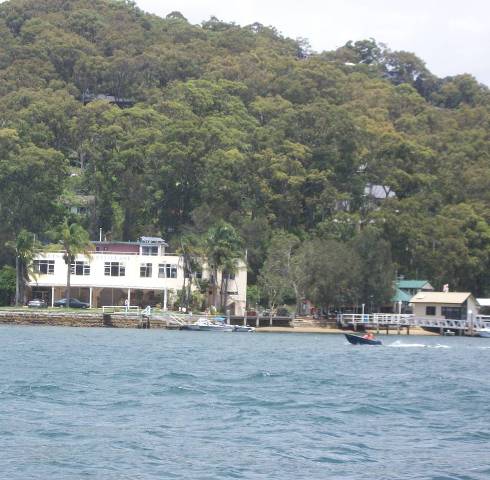
Methodist Church at Church Point - the Church at Church Point threads Collected and Collated by A J Guesdon, 2012 - 2025.